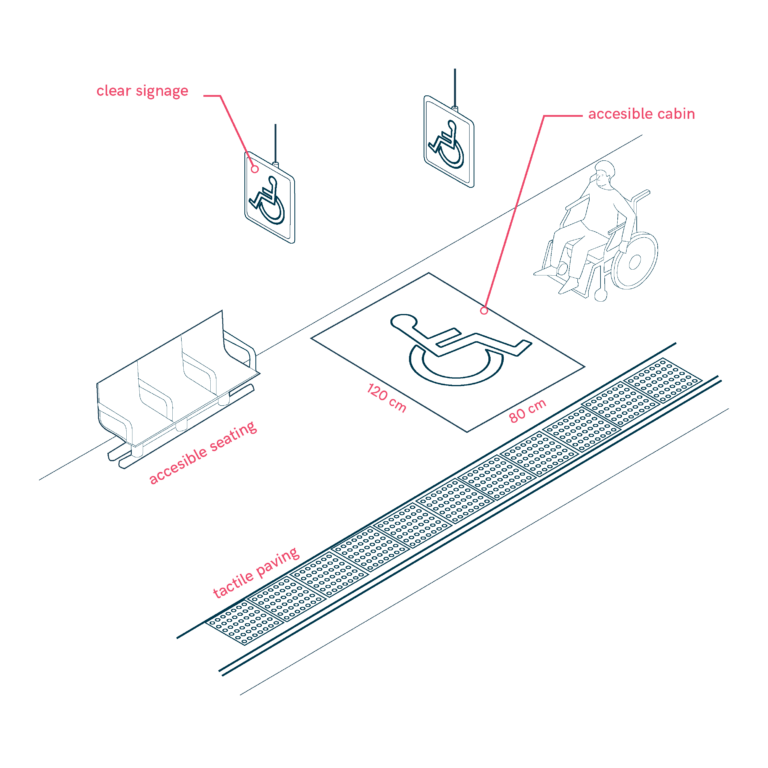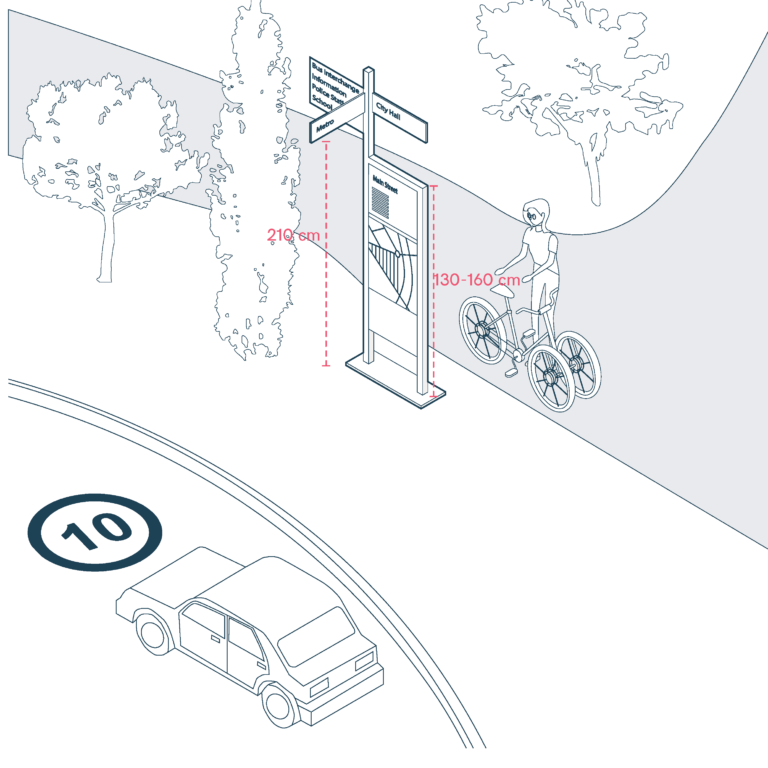
Gender perspective
Spectrum of abilities
The traditional urban planning approach has prioritized a standard user model, focused on private vehicle users, which favors city zoning over the integration of all uses at every scale. This approach makes daily routes unfeasible by excluding design needs related to caregiving roles, reduced mobility, and everyday dynamics, impacting women, children, older people, and other groups. Additionally, the fear of harassment or violence in poorly designed or underused spaces limits the freedom of movement for many women, as well as other users such as the LGBTQ+ community.
Accesibility and inclusion actions
In physical environments, inclusive infrastructures are required, such as connected pedestrian streets and routes, accessible and safe public transportation, adequate lighting, and public spaces that promote social interaction. For digital environments, participatory tools are needed that allow people to express diverse needs and applications that provide information about safe and accessible routes. Awareness of gender inequalities in urban space usage should also be promoted through educational and participatory platforms.
Key beneficiary users
These urban planning measures benefit various user profiles: women of all ages who, due to caregiving responsibilities or daily chores, require accessible and safe environments, LGBTQ+ individuals who face exclusion or insecurity in public spaces and need inclusive spaces; and those who are caregivers.

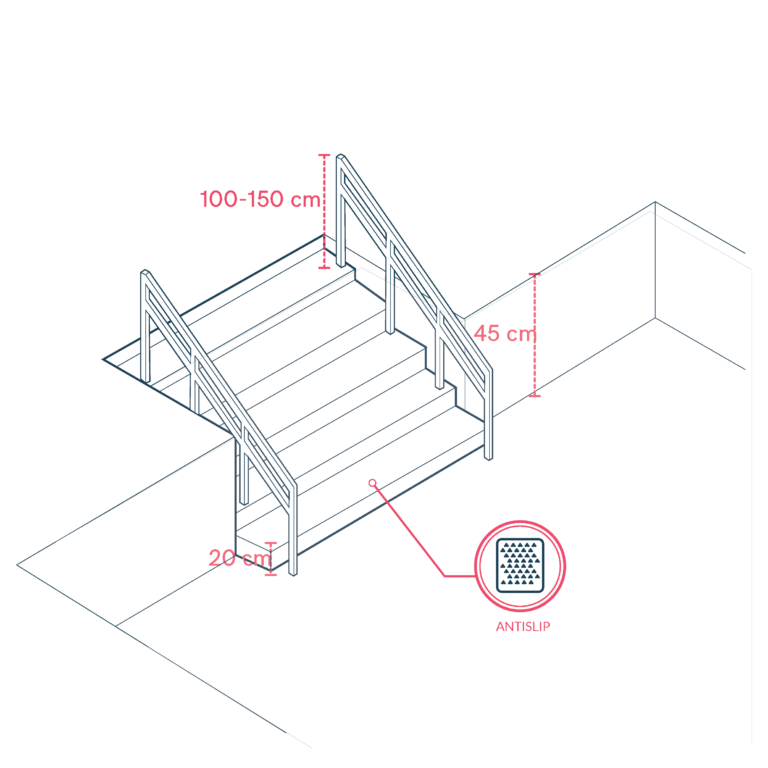
Access Steps
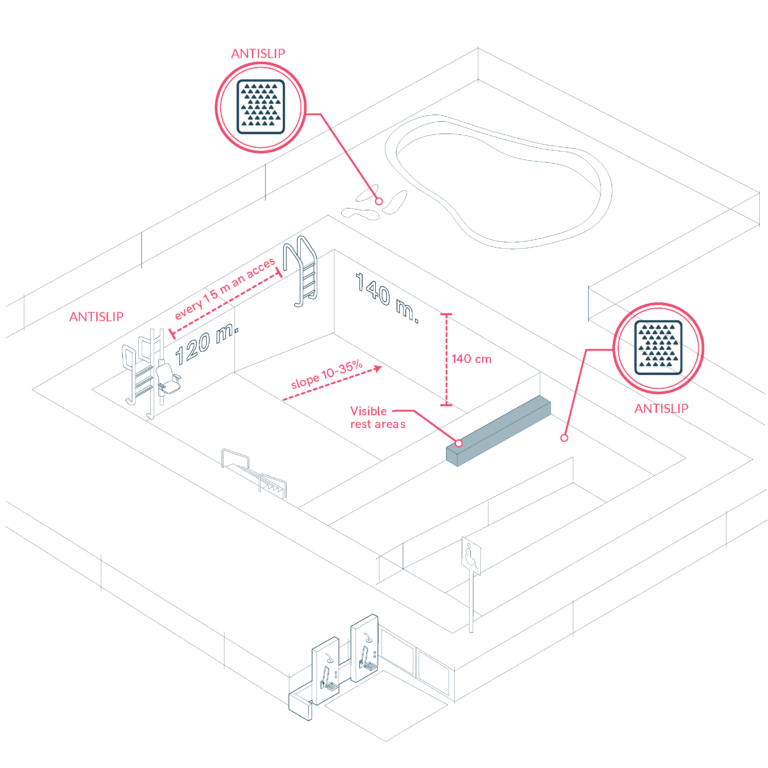
Accessibility in Swimming Pools
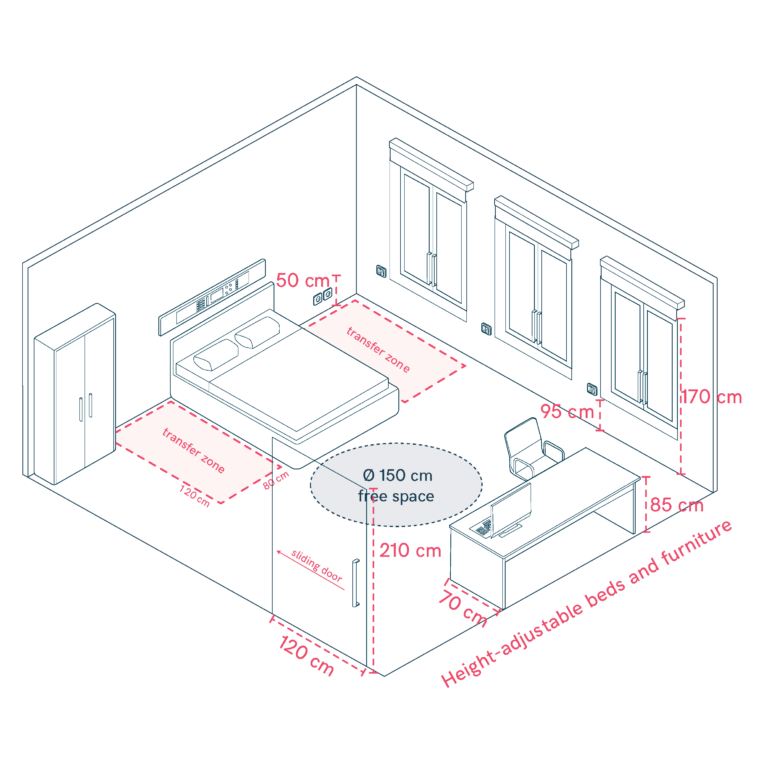
Accessible and Comfortable Bedrooms

Accessible and Ergonomic Kitchen
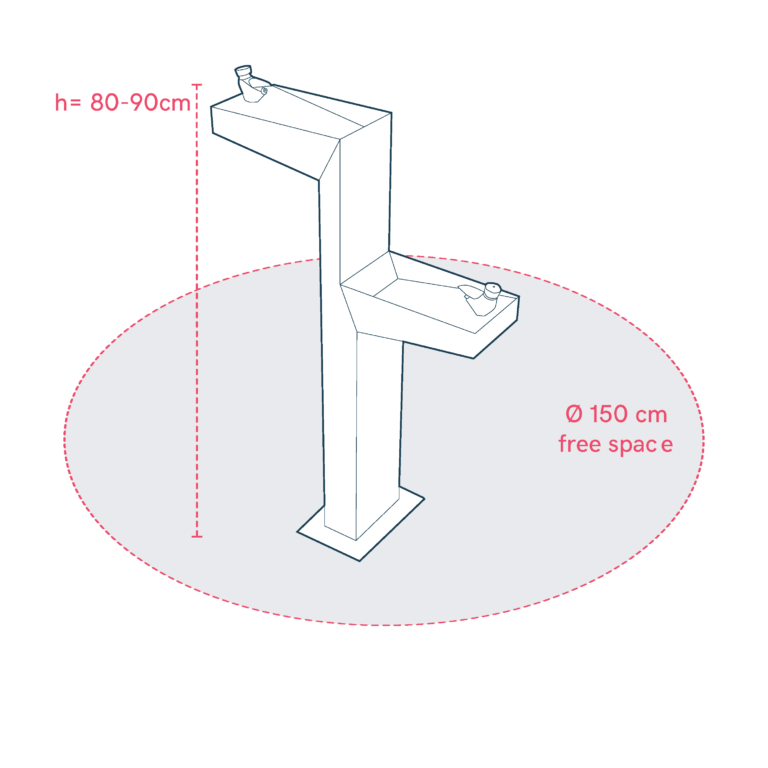
Accessible and Inclusive Drinking Fountains

Accessible and Well-Maintained Public Spaces
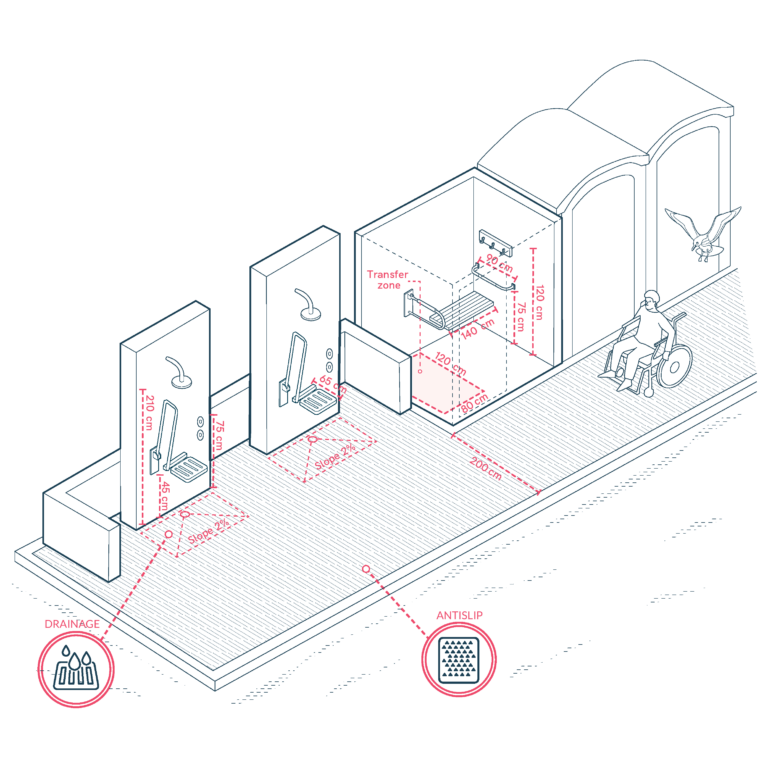
Accessible Dressing Rooms and Showers

Accessible Gangways for Vessel Access
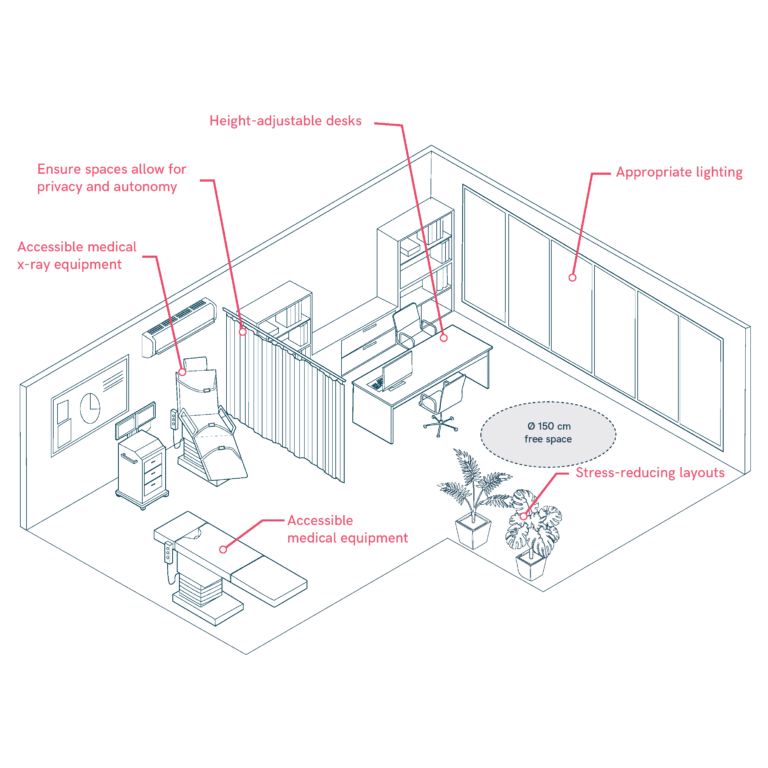
Accessible Medical Consultations
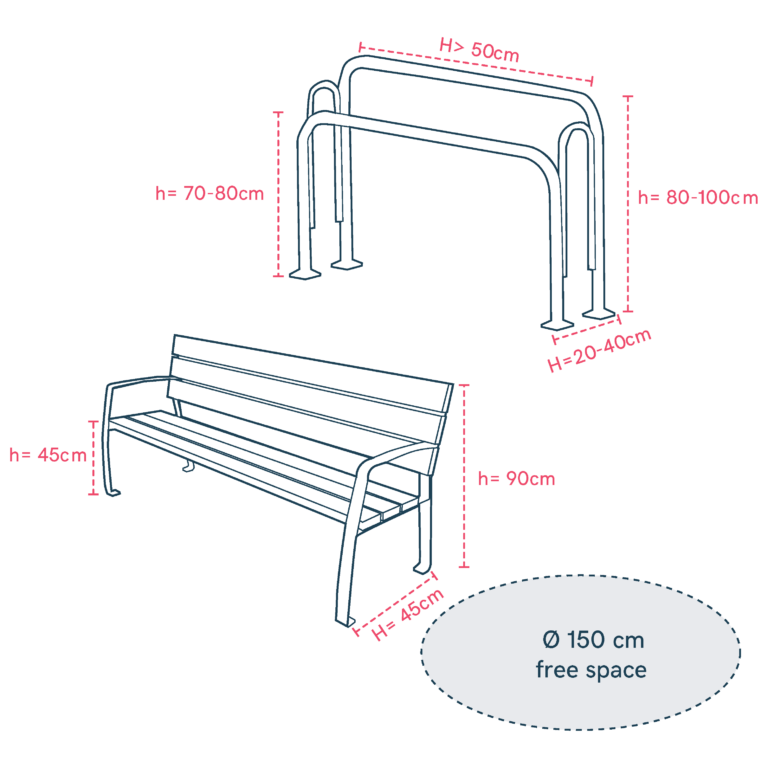
Accessible Seating Dimensions
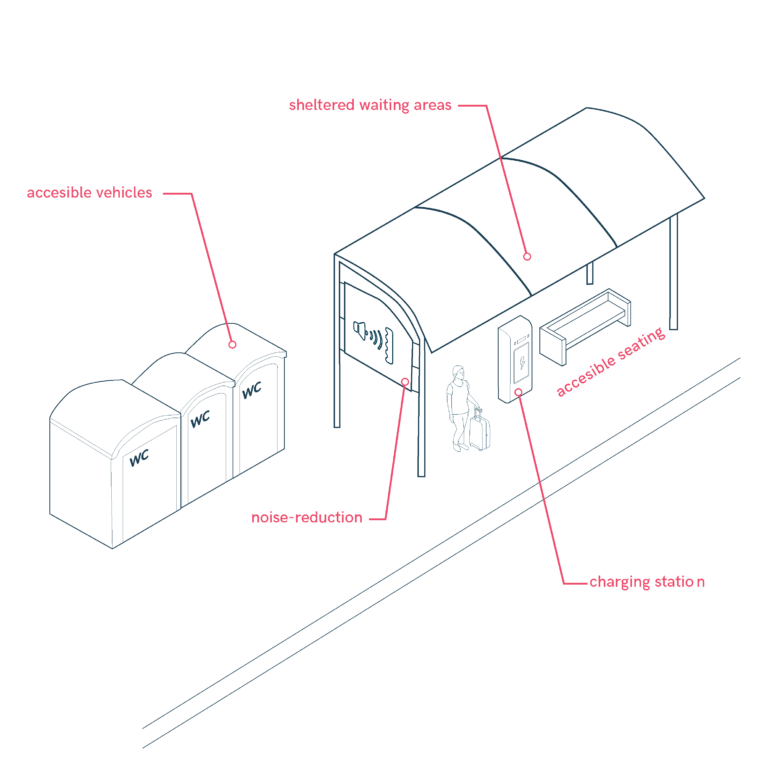
Accessible Waiting Areas and Station Facilities at Mobility Hubs
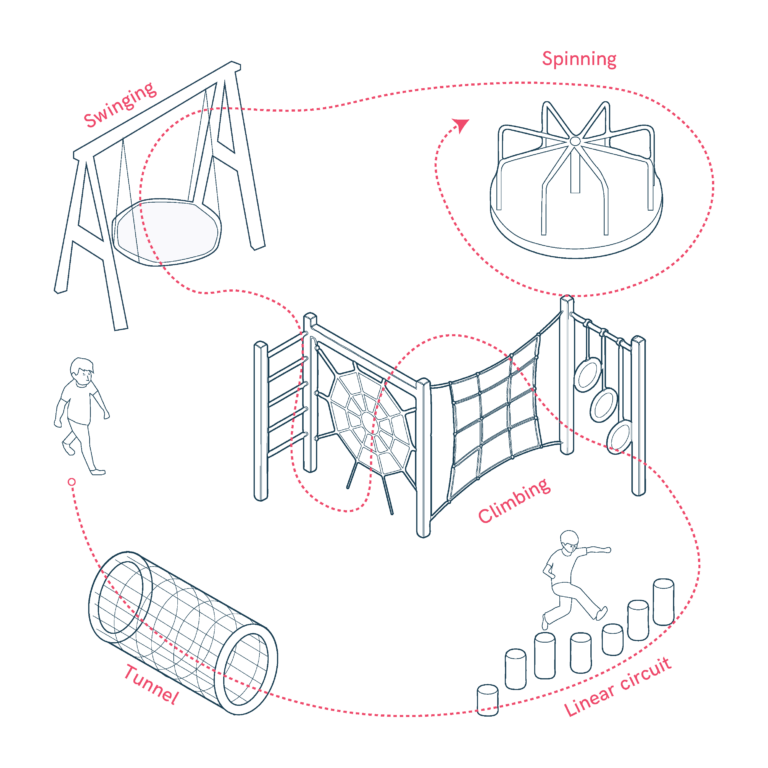
Adapt Motor Stimulation Play Opportunities
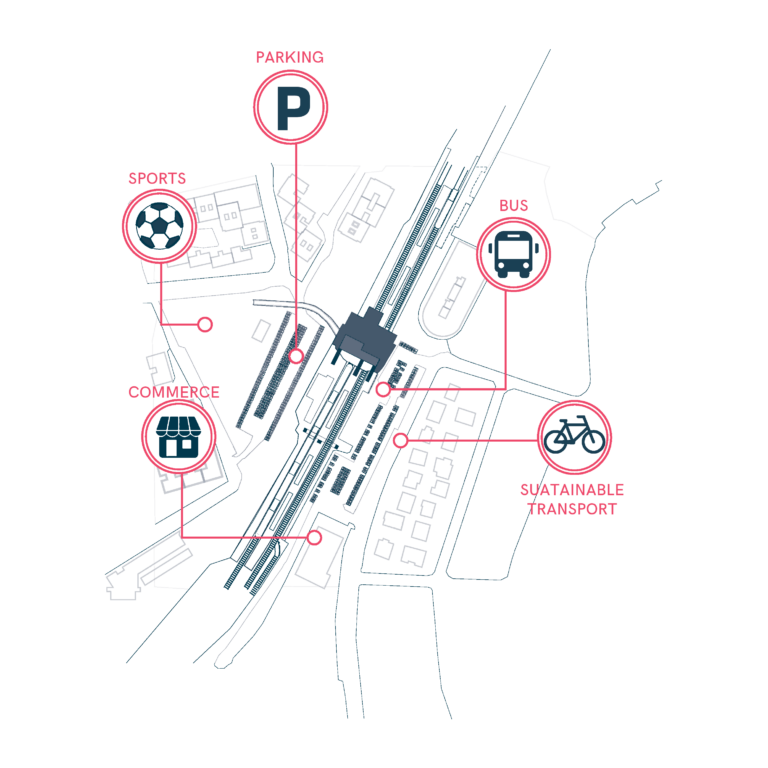
Approach to the station: Welcoming and Accessible Entrances
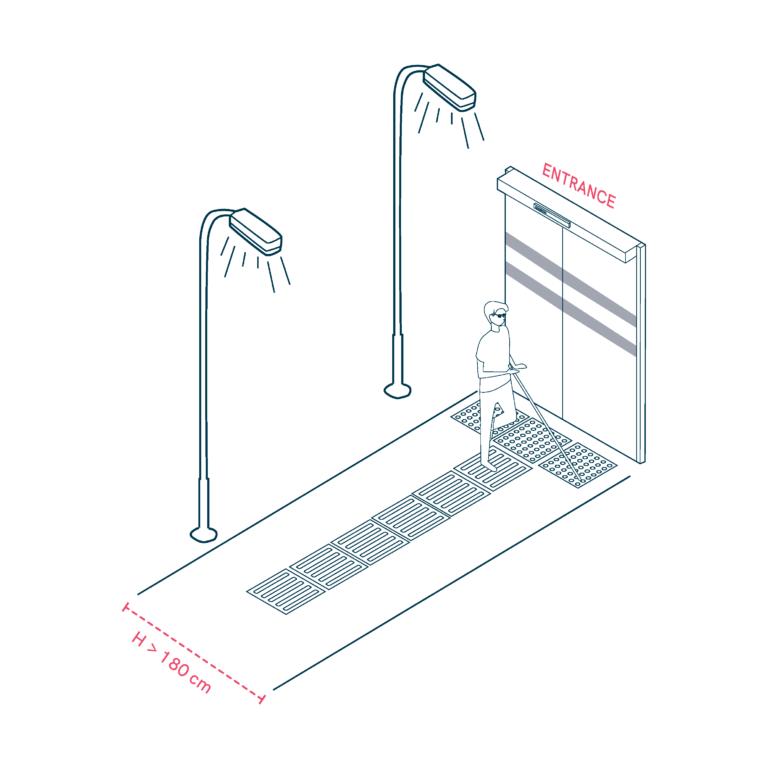
Around the Mobility Hub
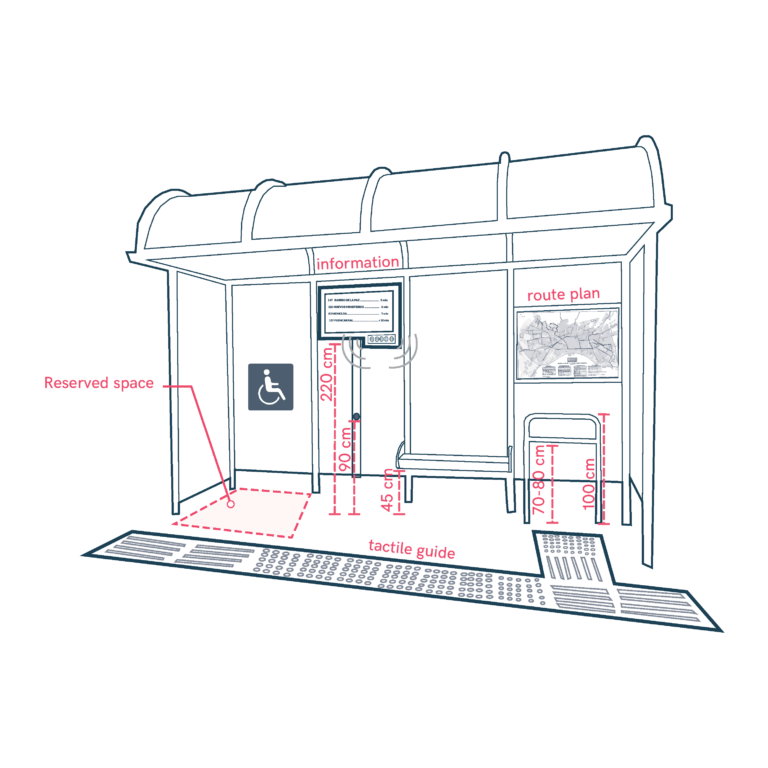
Bus Stop Design
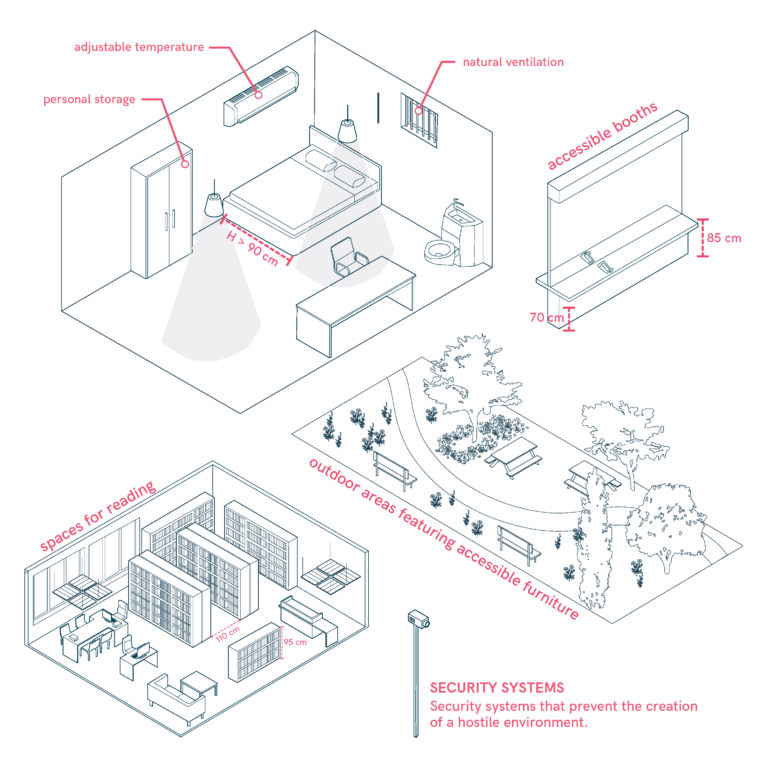
Cells and Detention Spaces
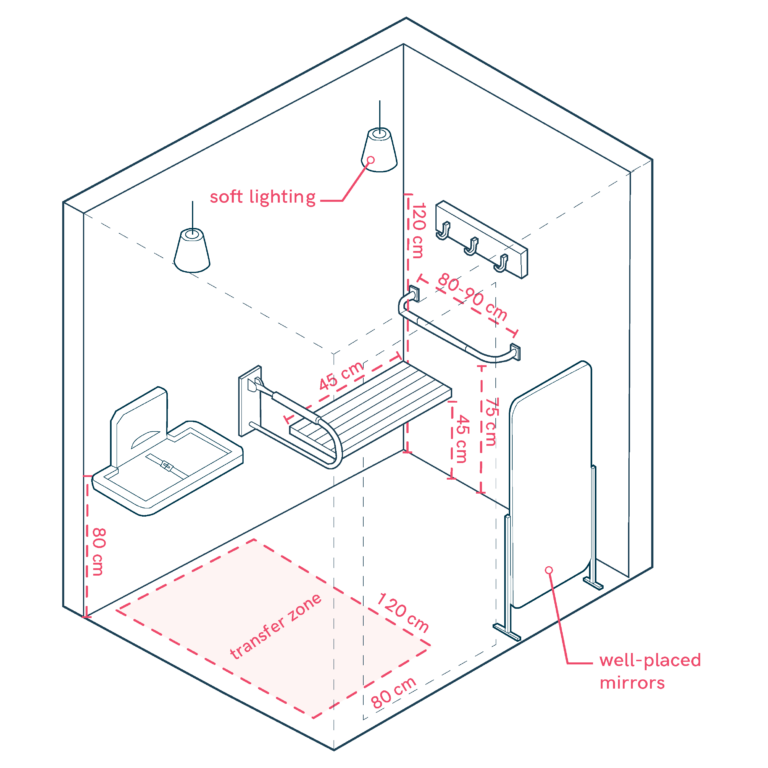
Changing Areas for Various Users

Clear Signage and Orientation
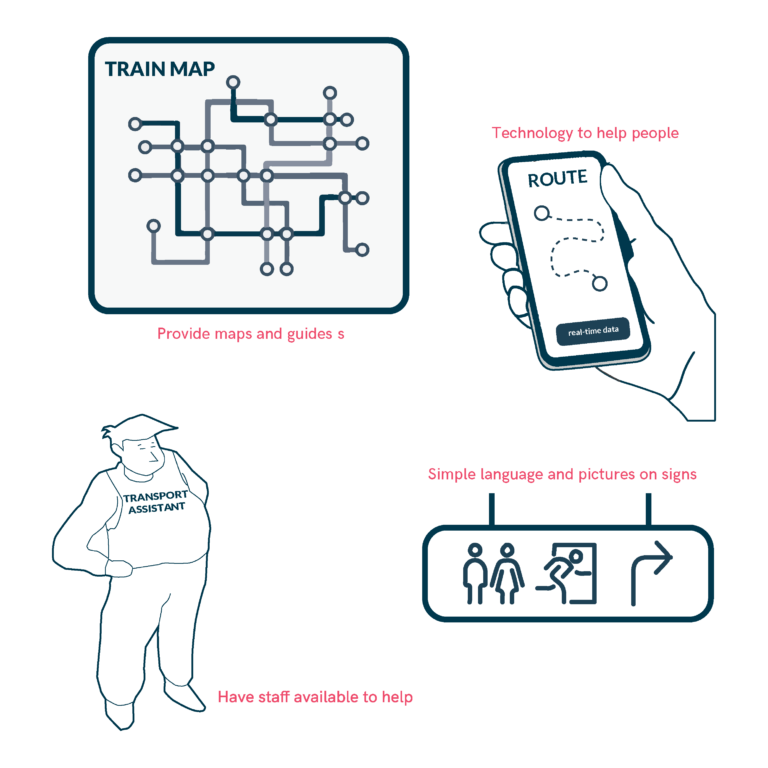
Cognitive-Friendly Design
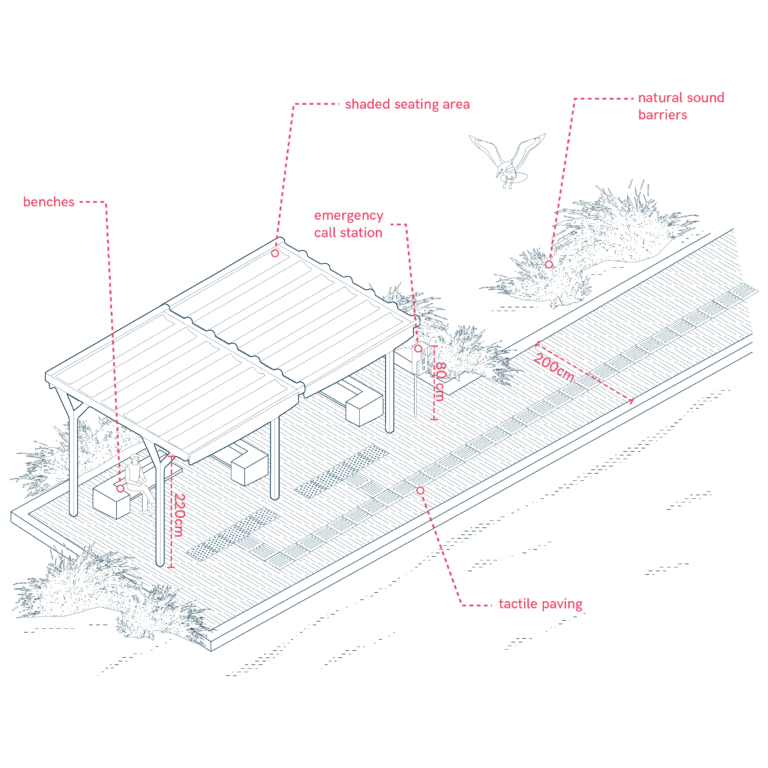
Comfort and Safety Enhancements
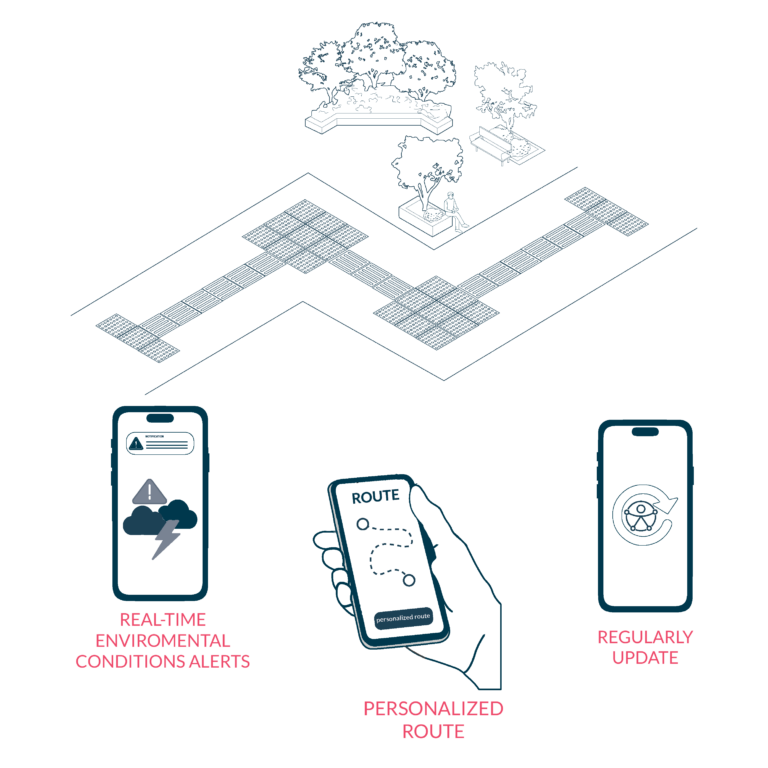
Comfort-Based Mobility Assistance
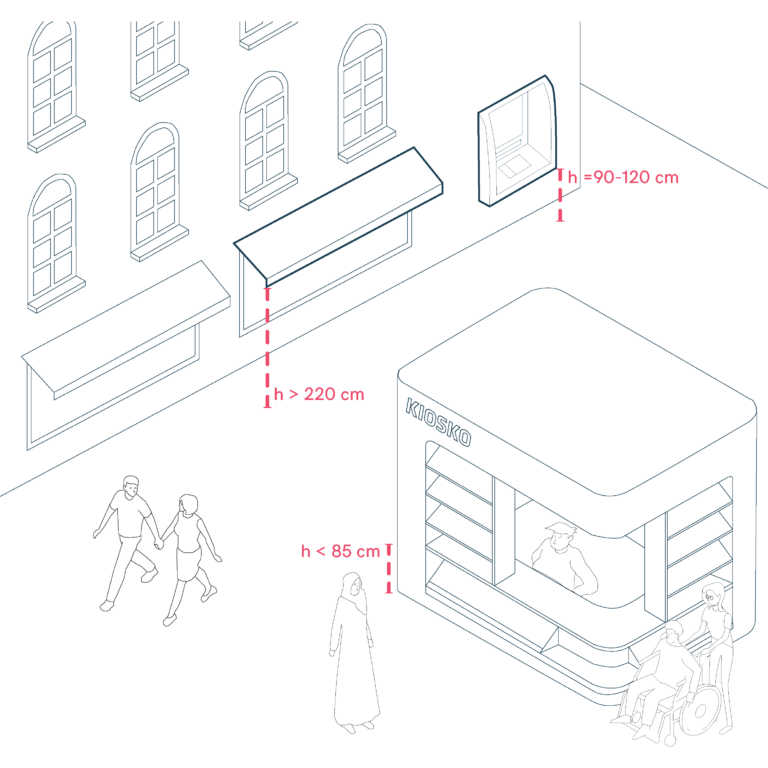
Commercial Activity Elements in Pedestrian Areas
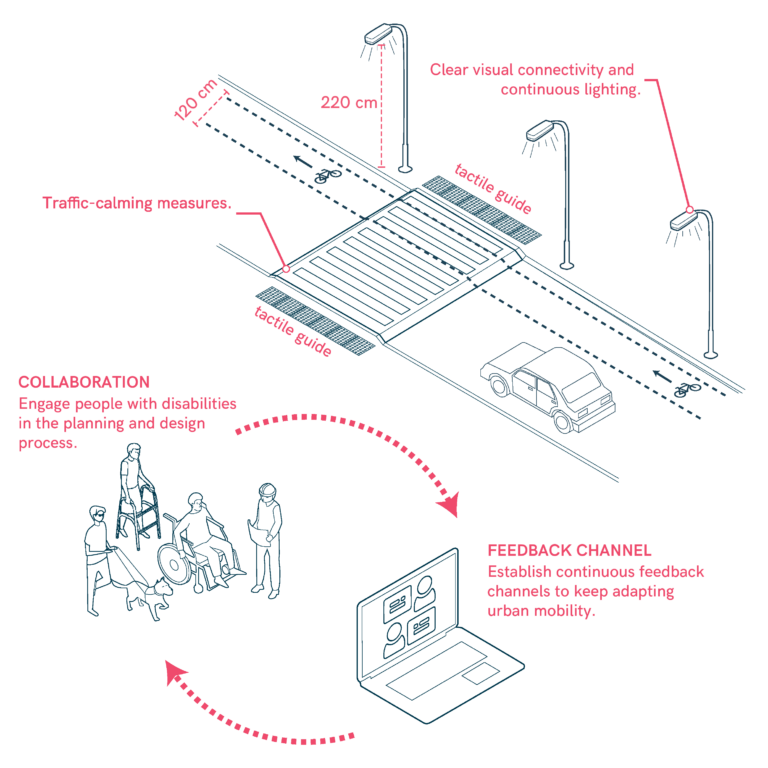
Community Engagement and Feedback
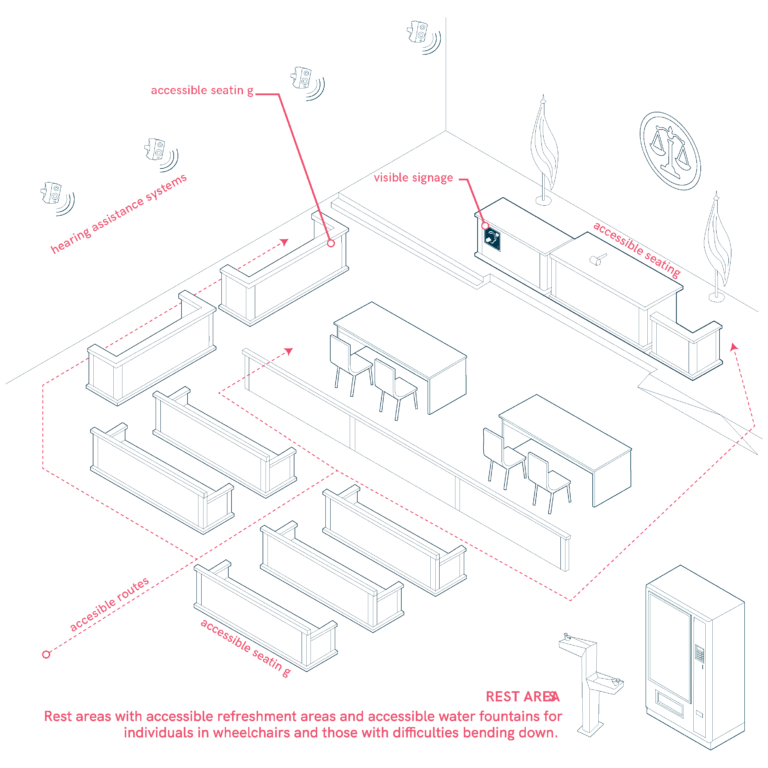
Courtrooms
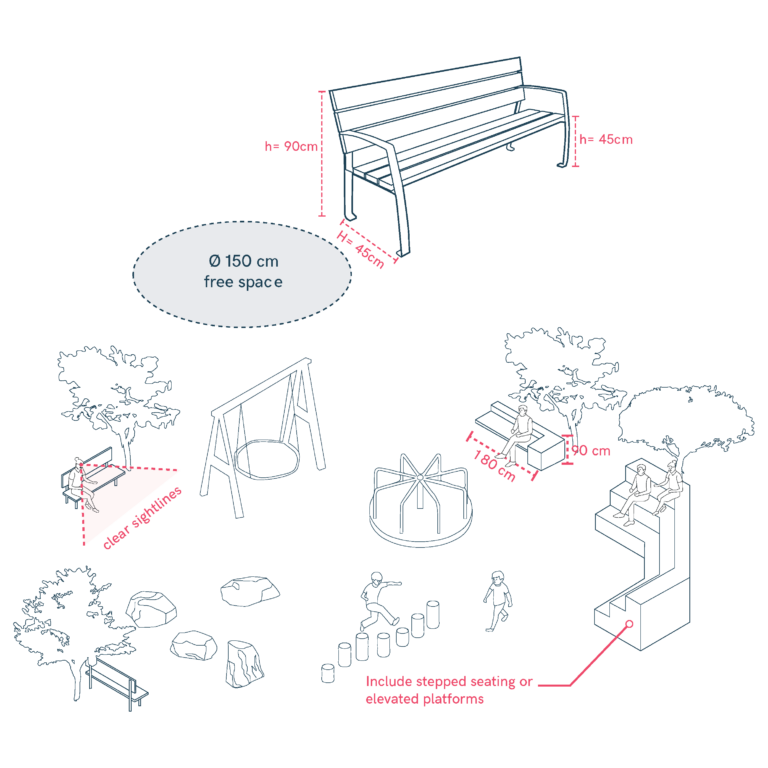
Create Comfortable Surveillance and Rest Areas
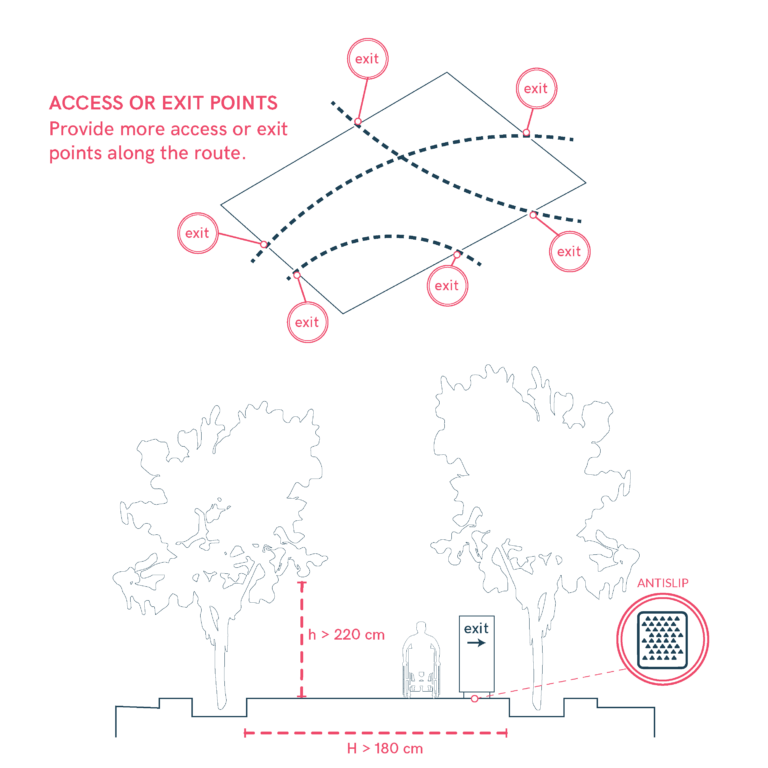
Design accessible pedestrian routes
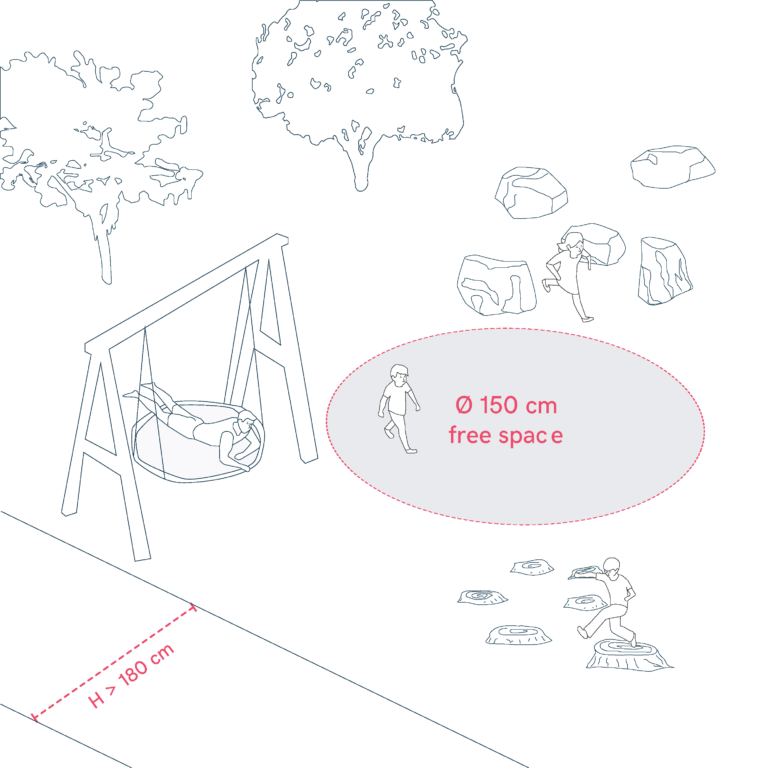
Design Accessible Play Areas
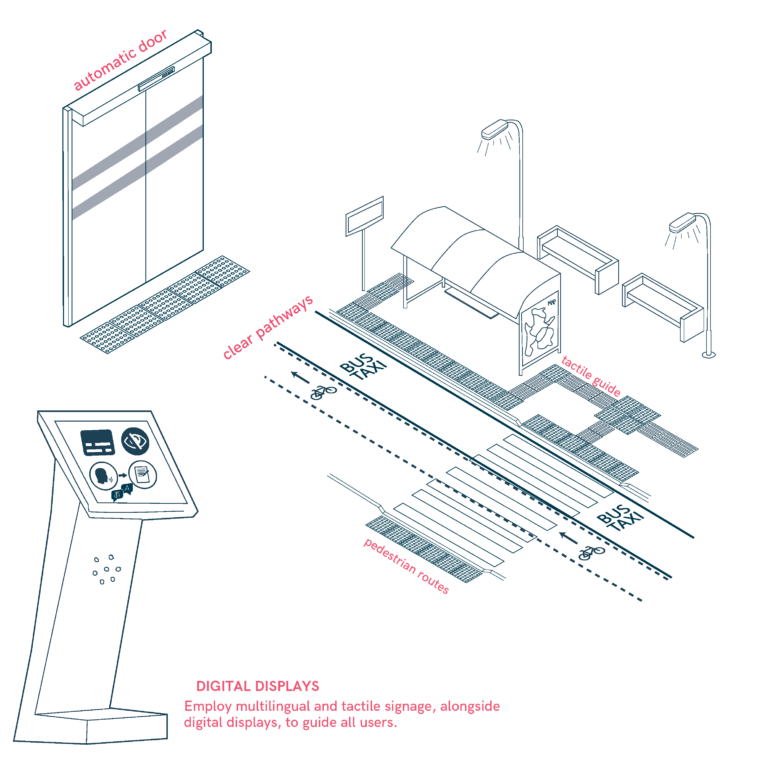
Design for Everyone’s Journey
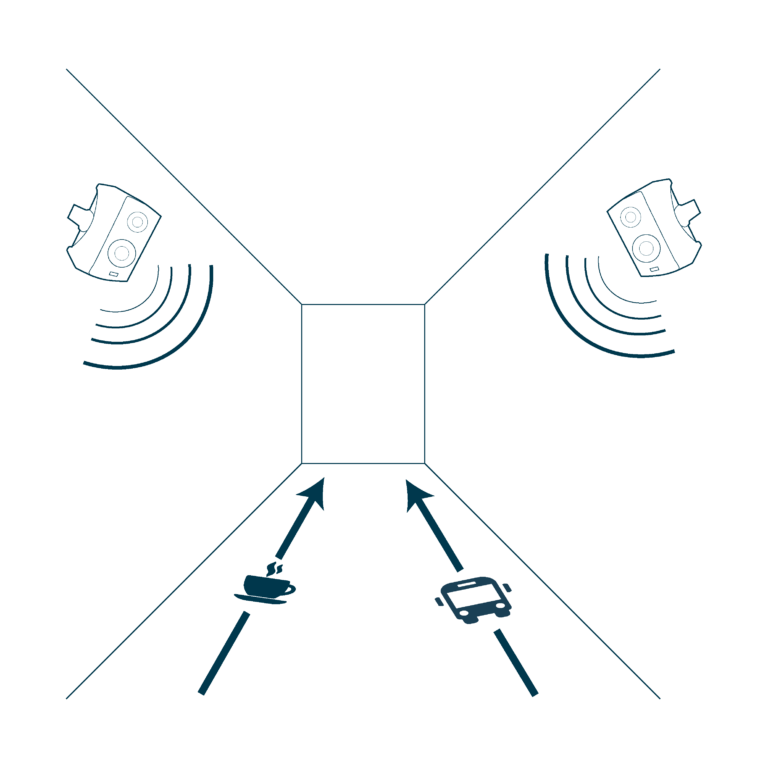
Designing Hallways on Passenger Vessels
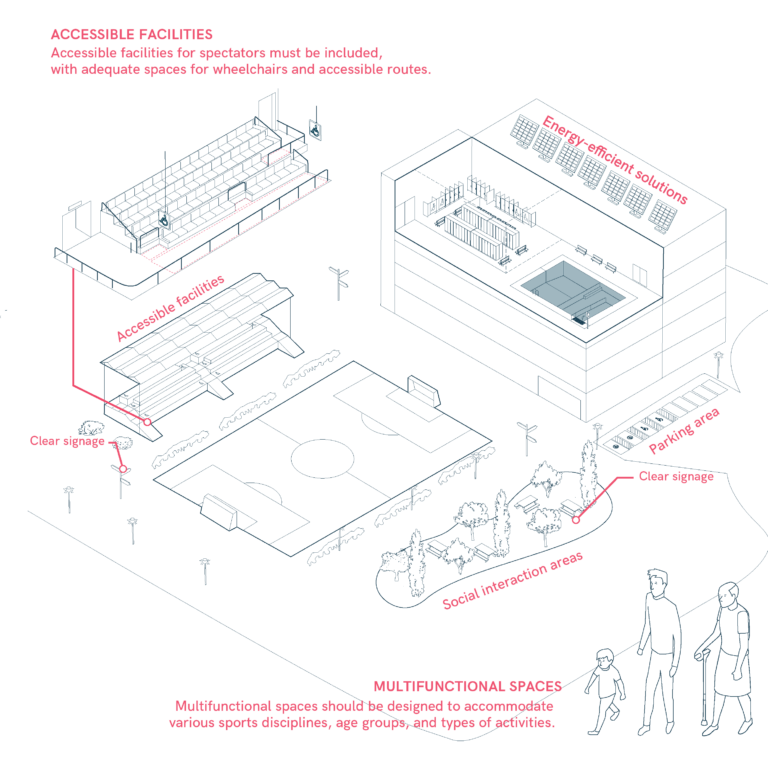
Designing Inclusive Sports Areas
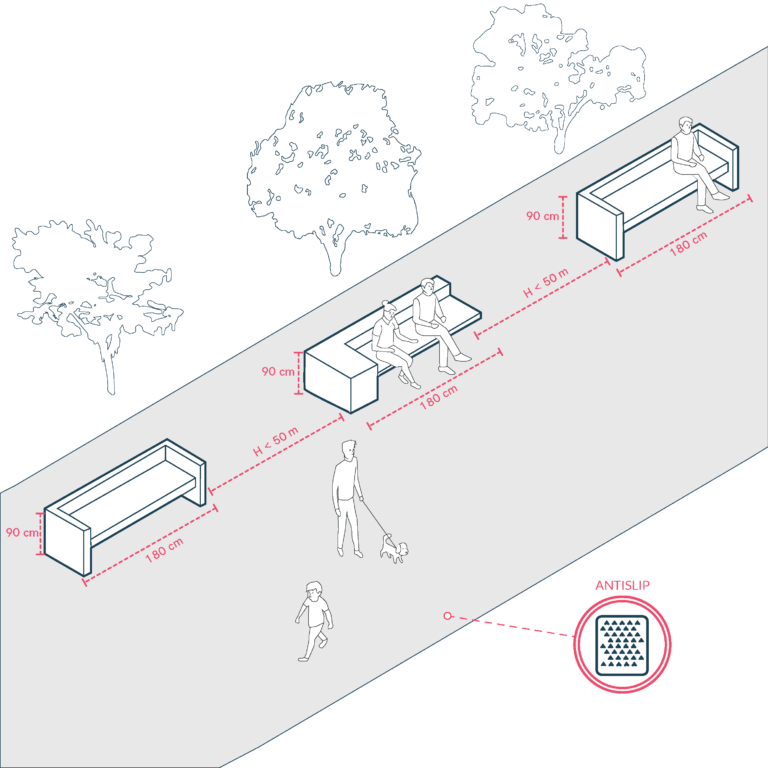
Dimensions of Public Plazas, Parks, and Gardens
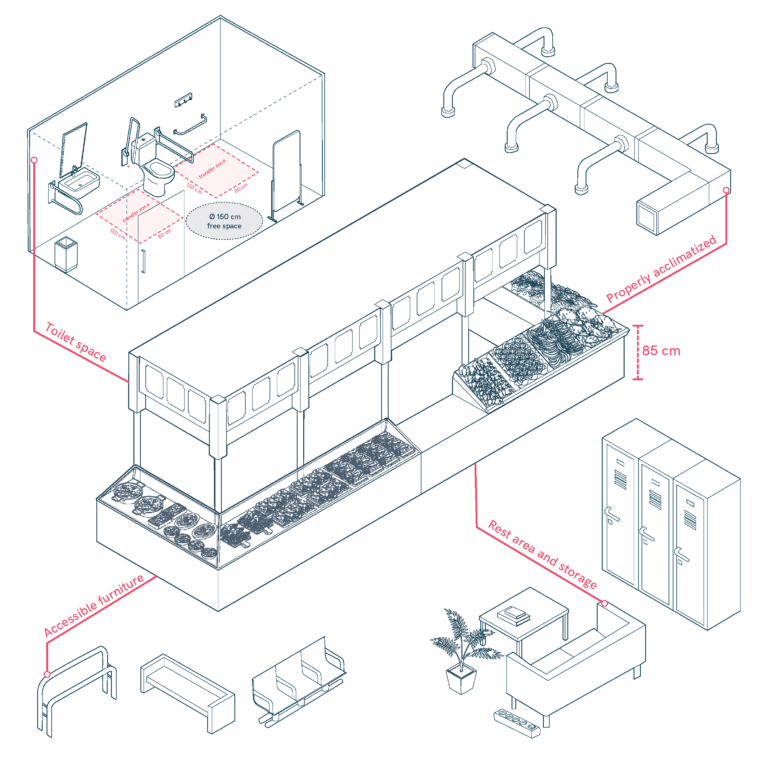
Diverse furniture and Market Stalls
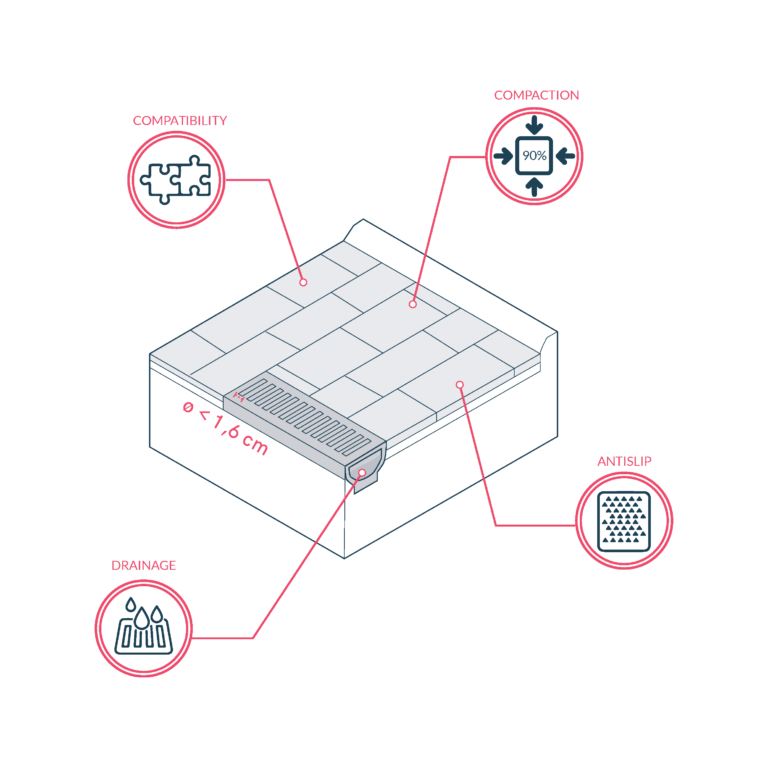
Durable Pavements

Emotional Accessibility
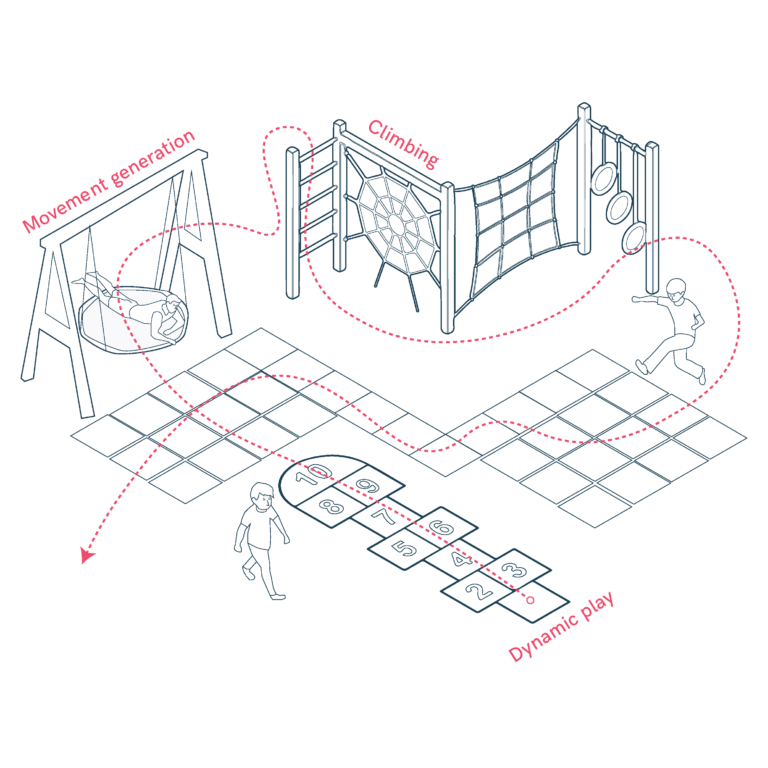
Encourage Mixed-Use Play Areas
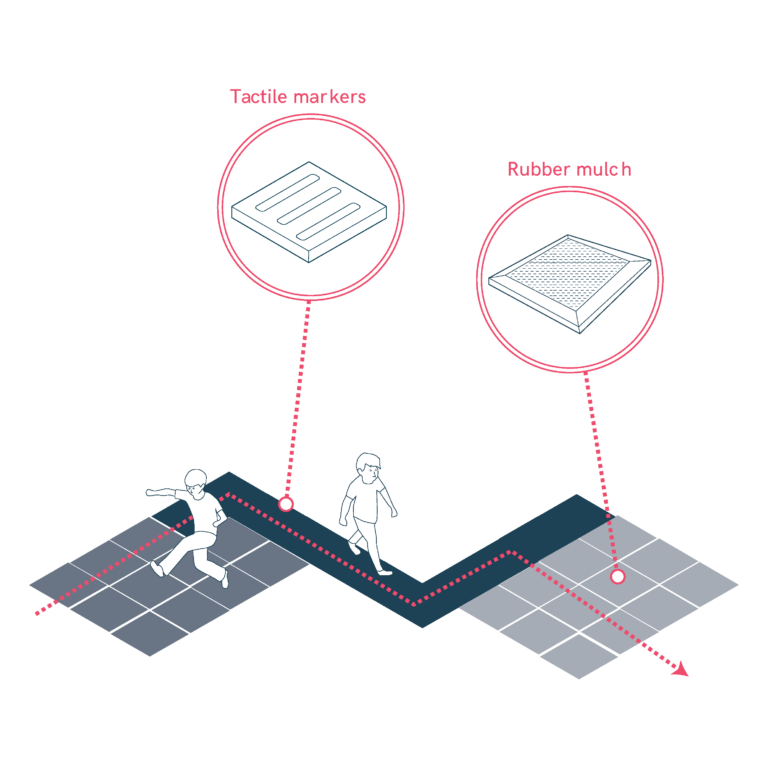
Ensure Accessible Ground Design
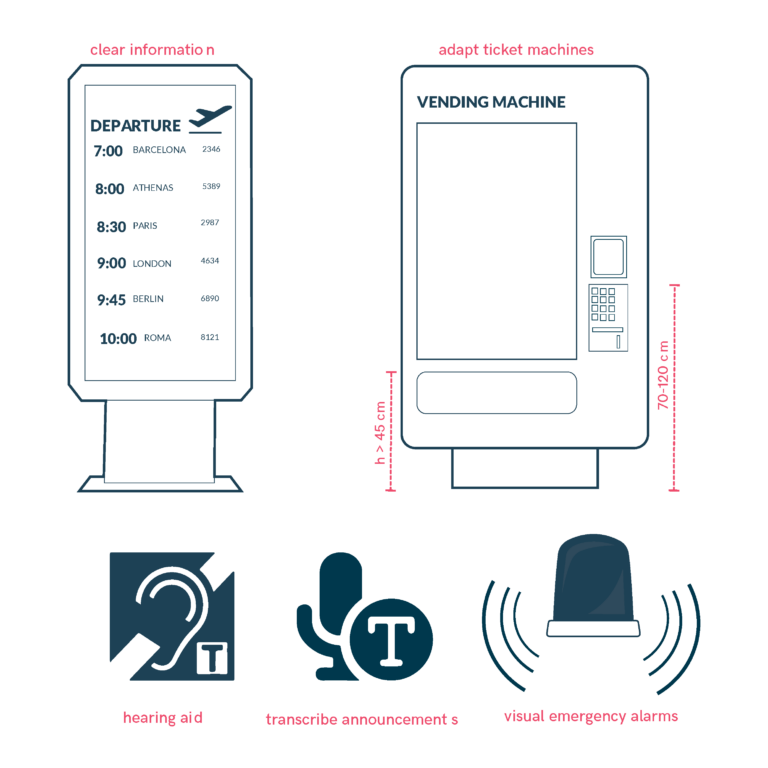
Ensuring Accessibility at Airports
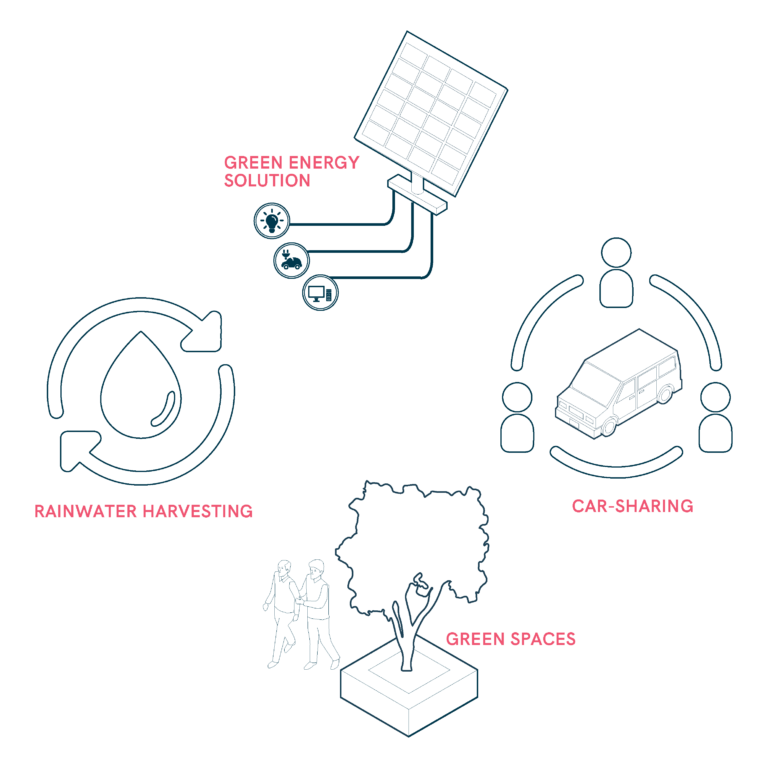
Environmental Sustainability at Mobility Hubs
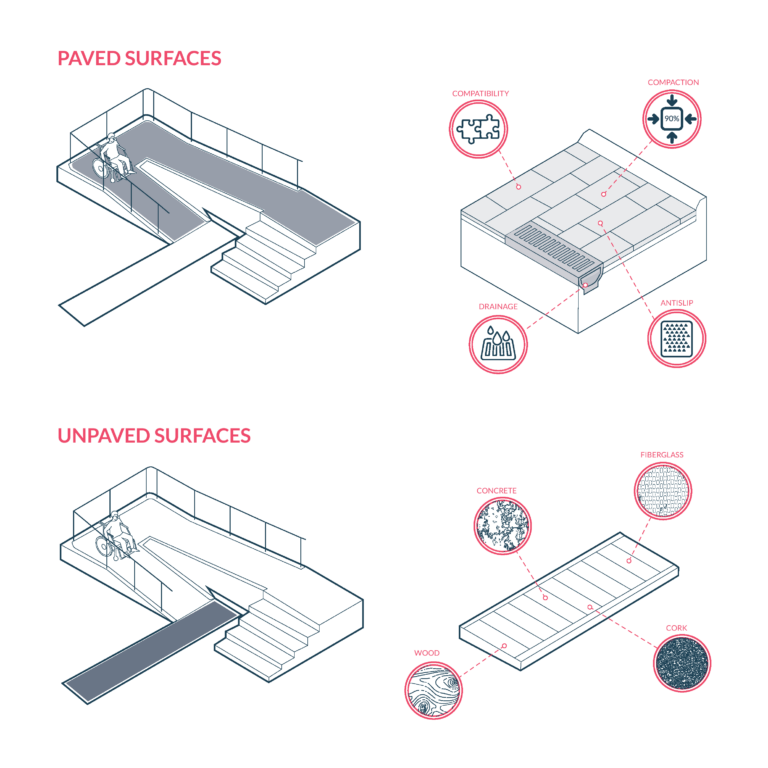
Equip Accessible Points with Essential Amenities
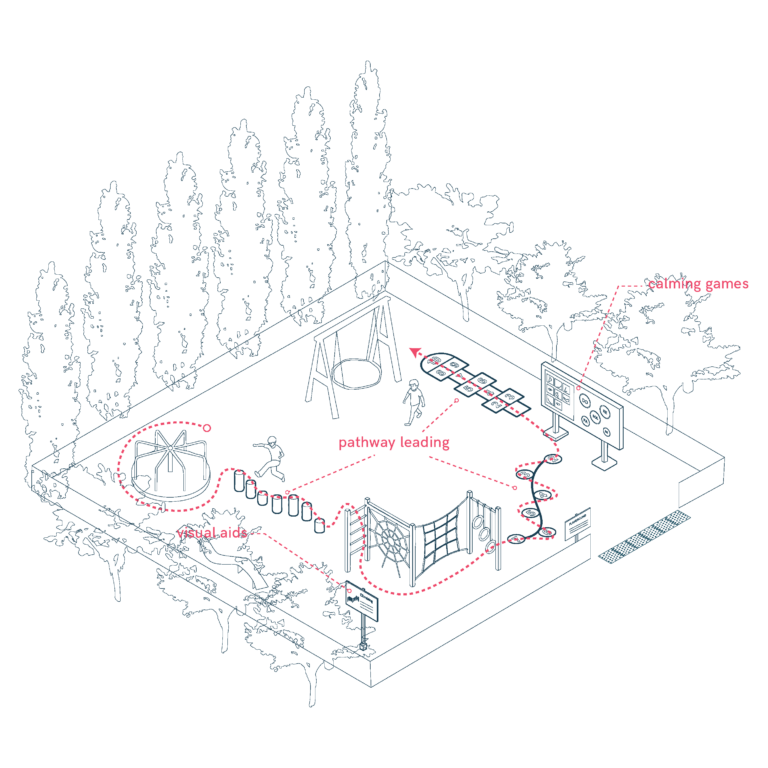
Facilitate Transitions and Waiting Times
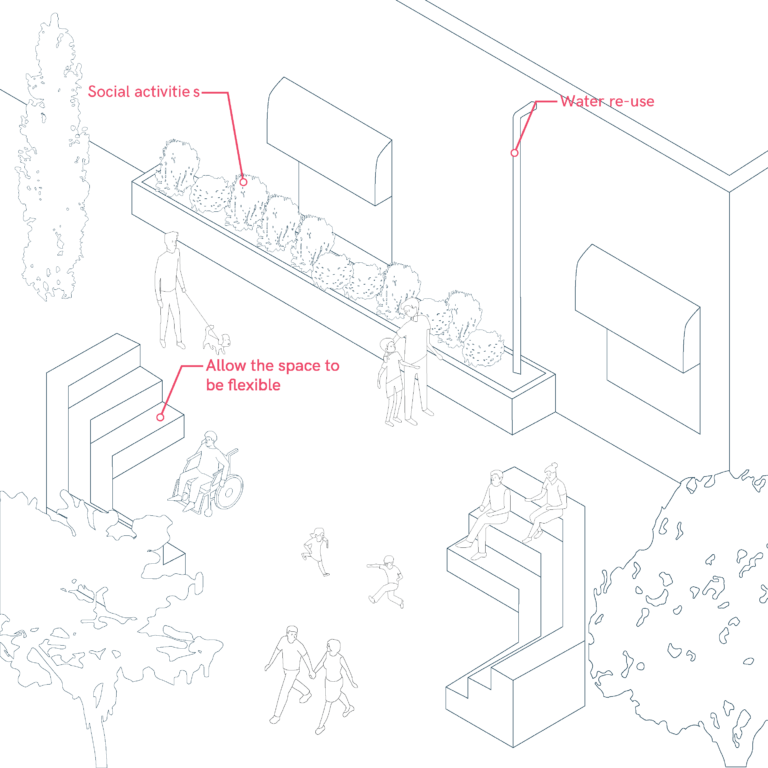
Flexible Use and Community Engagement
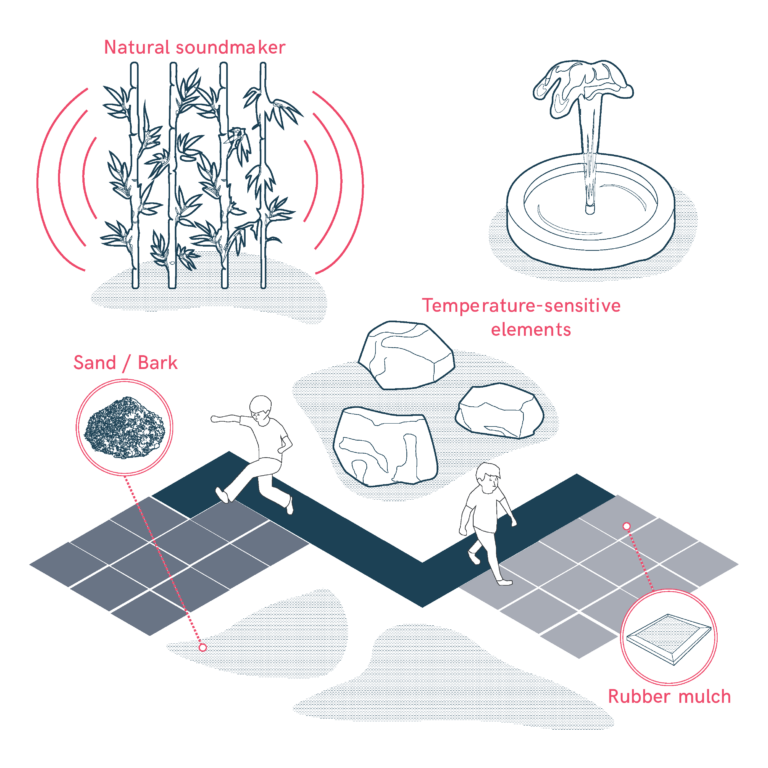
Foster Sensory Play Opportunities
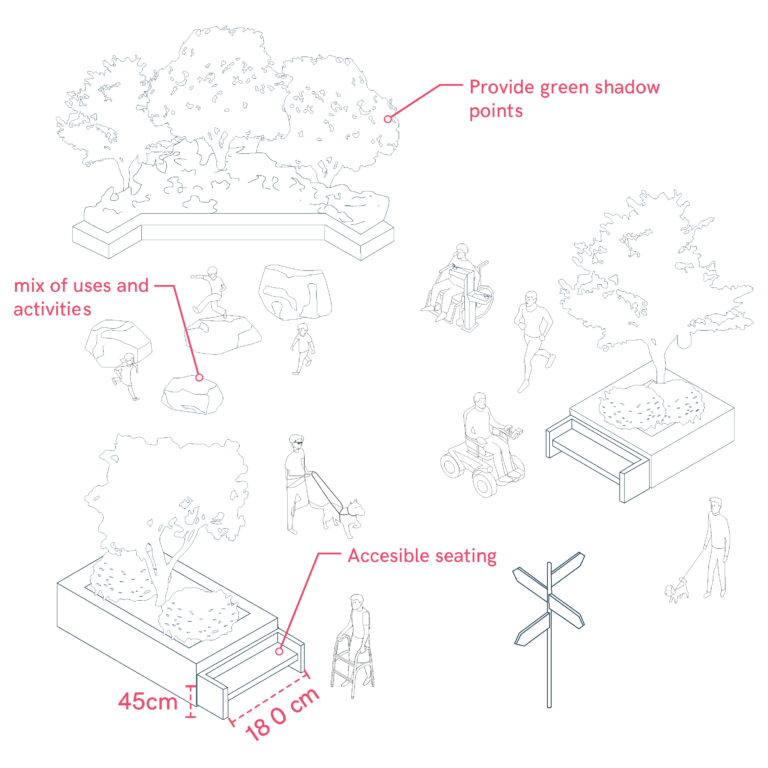
Foster Vitality and Social Interaction
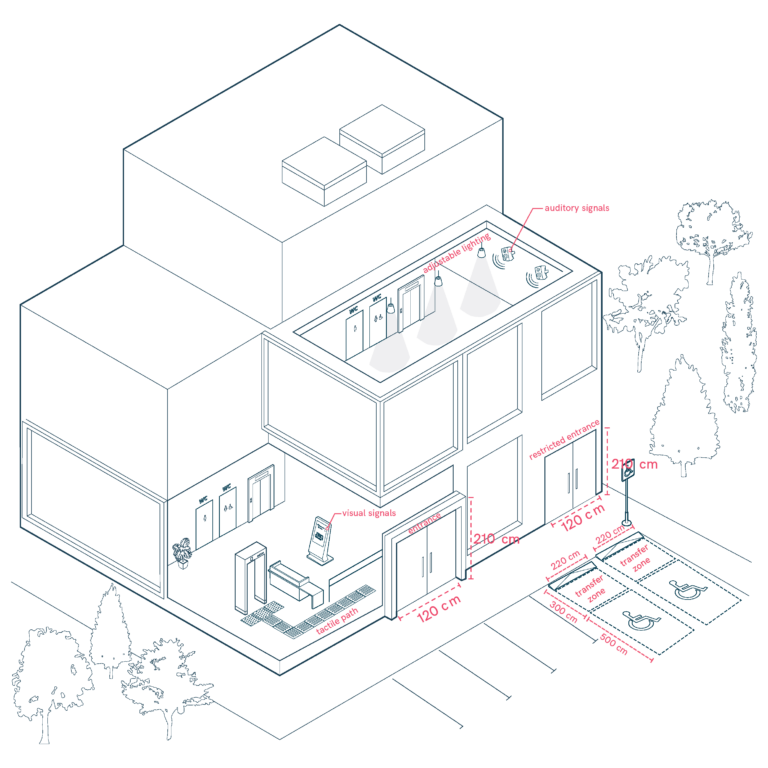
General Aspects of State Buildings
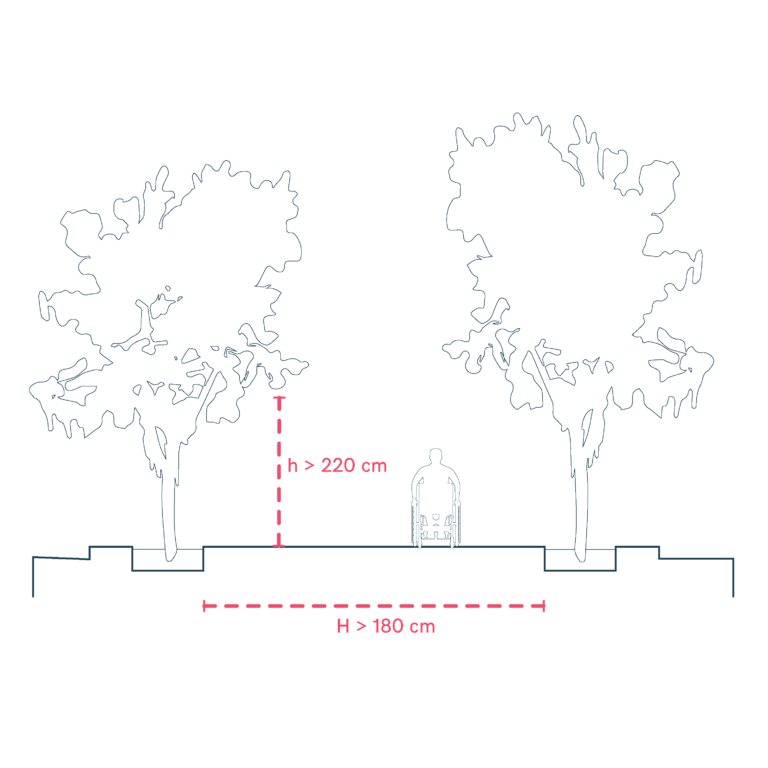
General Conditions for Urban Furniture
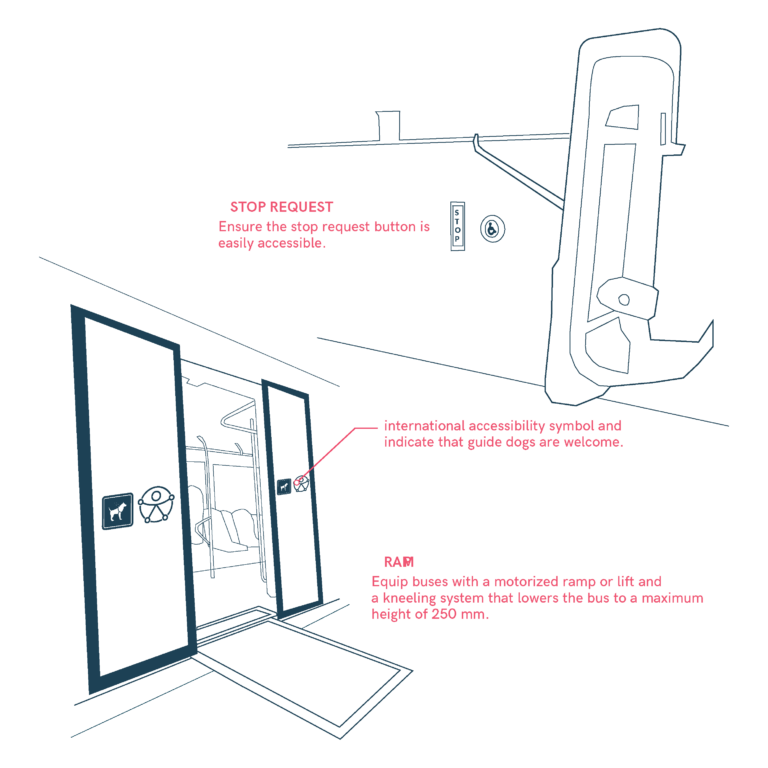
Getting On and Off the Bus
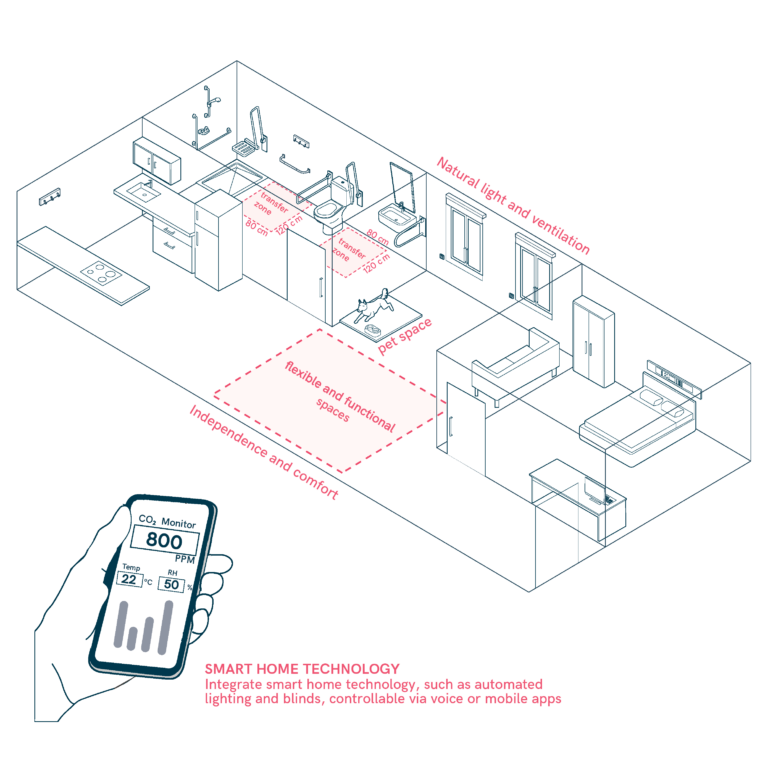
Home
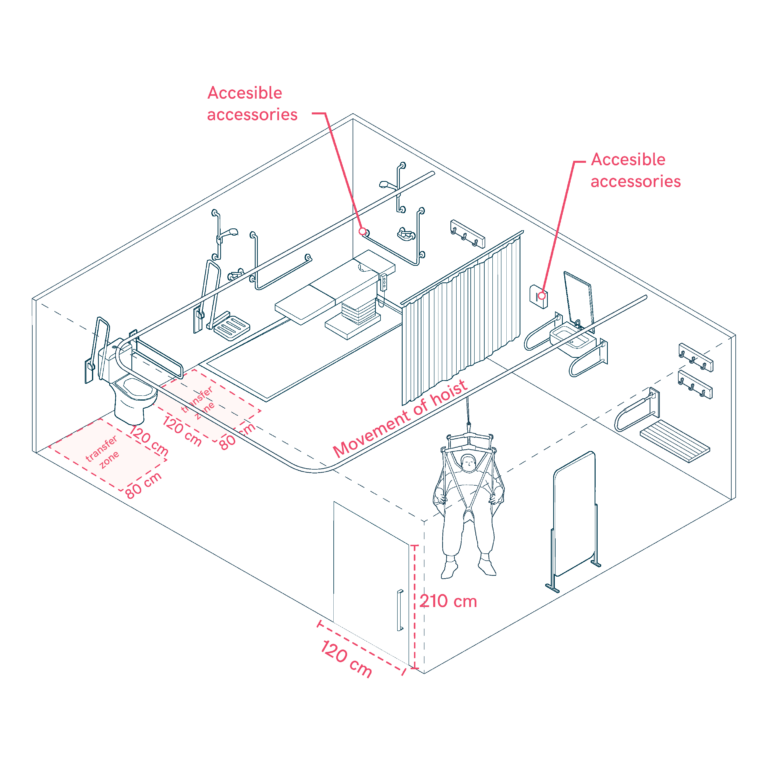
Hospital Bathrooms
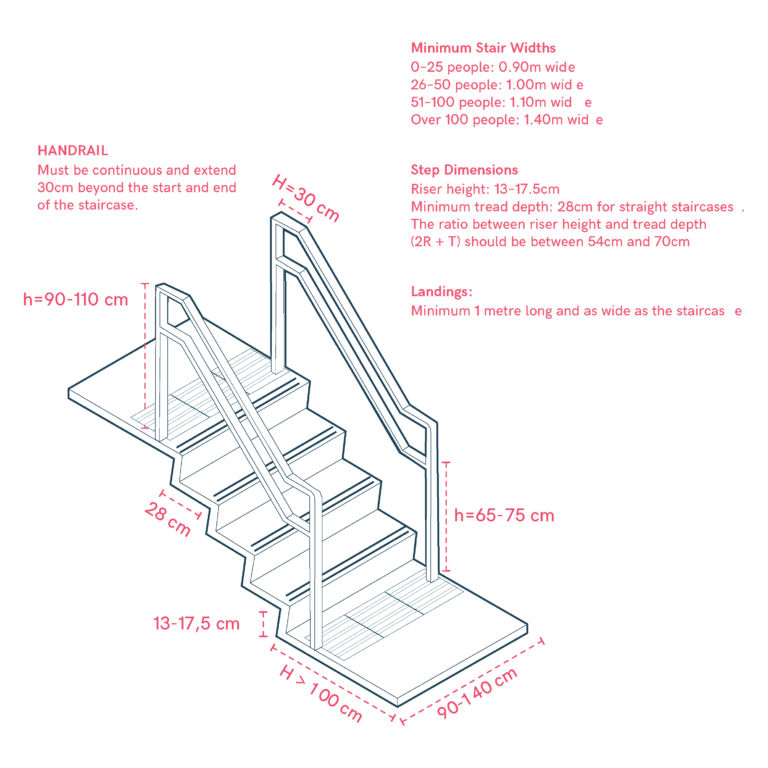
Hospital Staircases
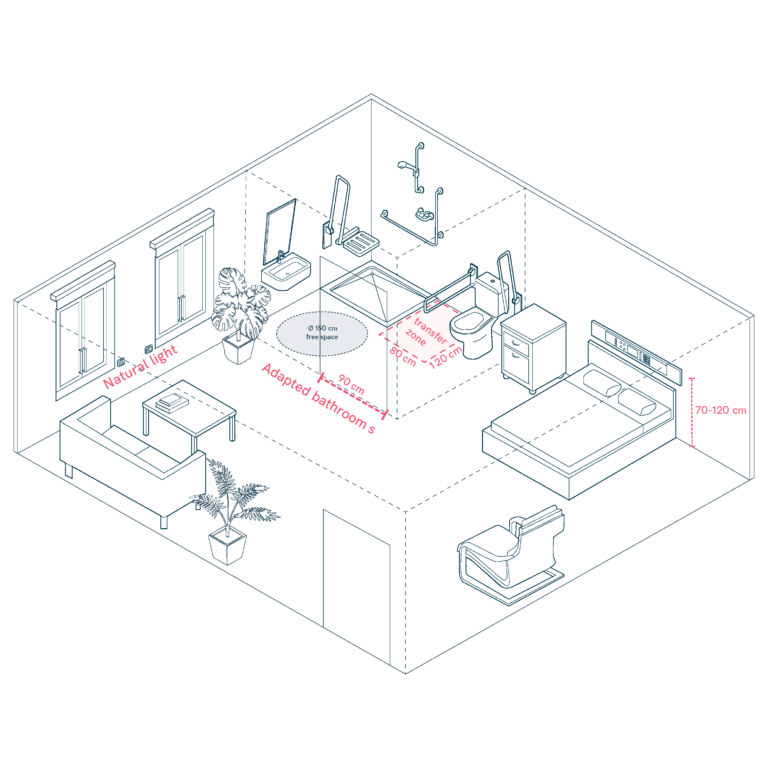
Humanised Patient Rooms
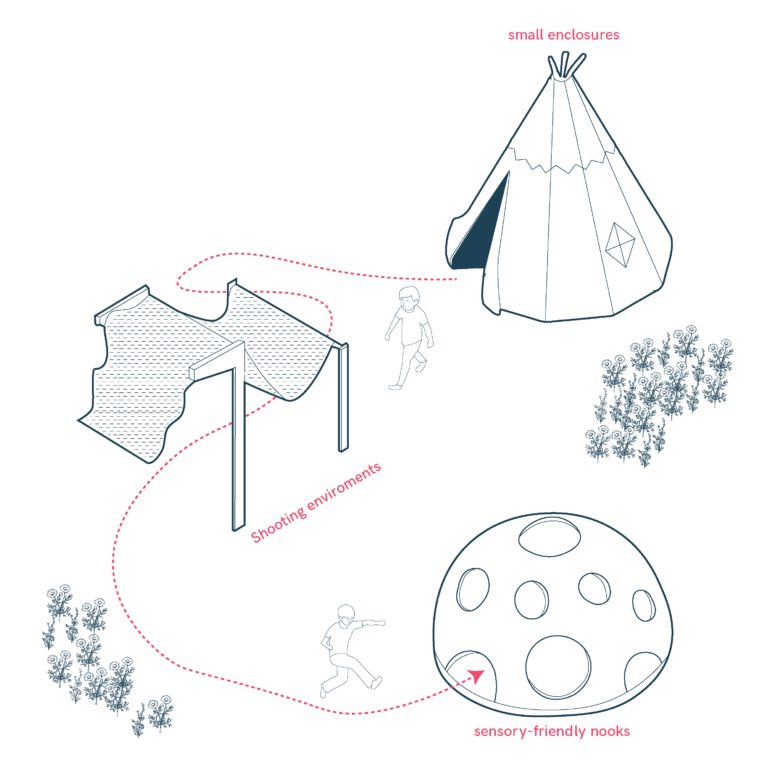
Include Calm/Haven Spaces
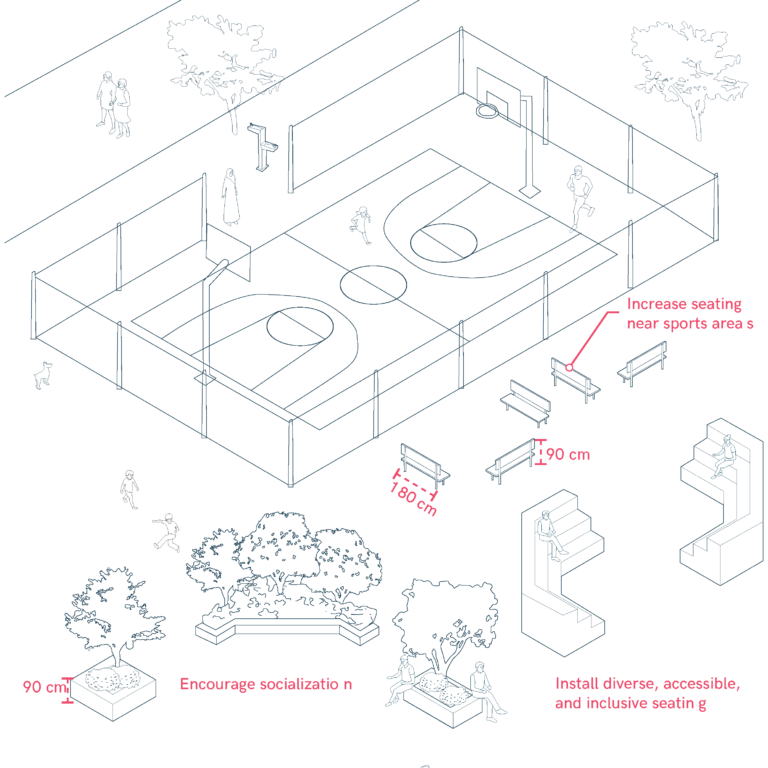
Inclusive and Comfortable Seating
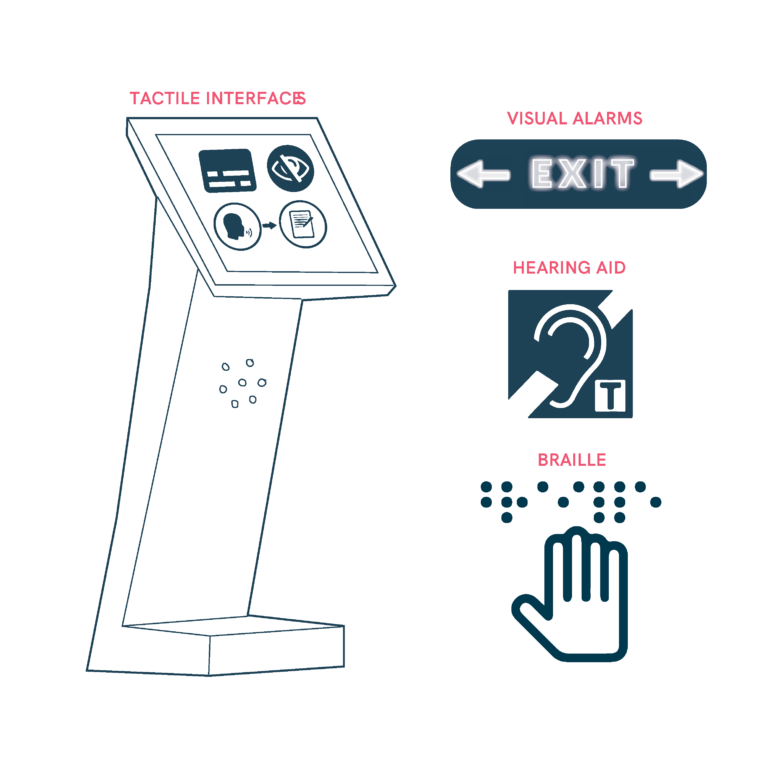
Inclusive Ticketing and Fare Systems at Mobility Hubs
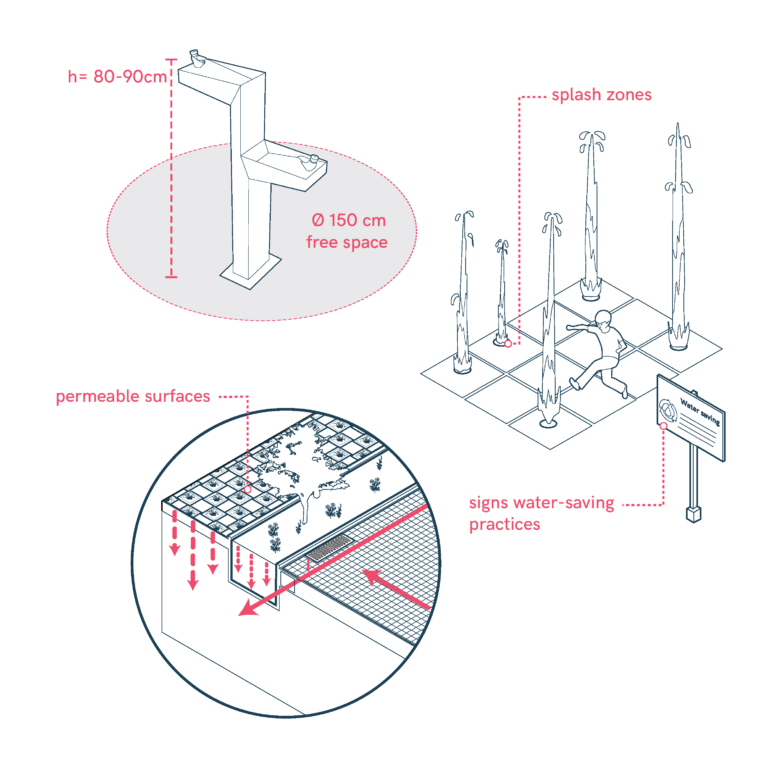
Incorporate Fountains and Water Features
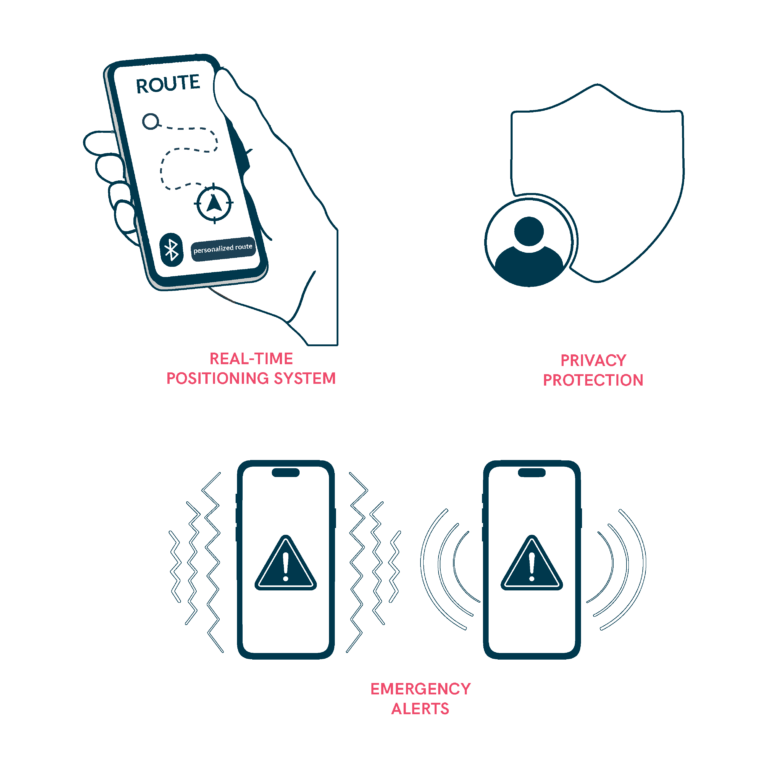
Indoor Assistive Technologies
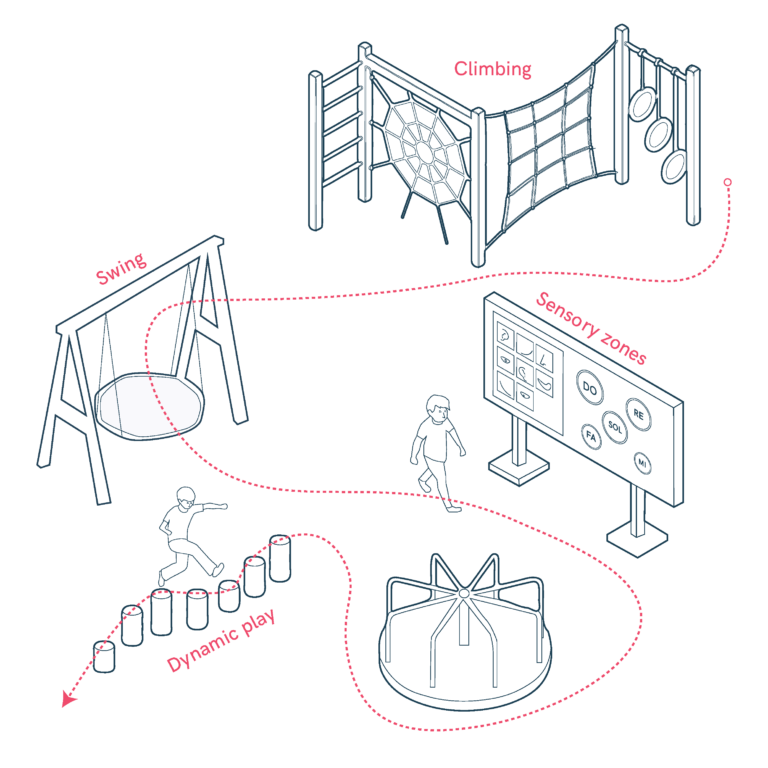
Install Diverse and Inclusive Play Equipment
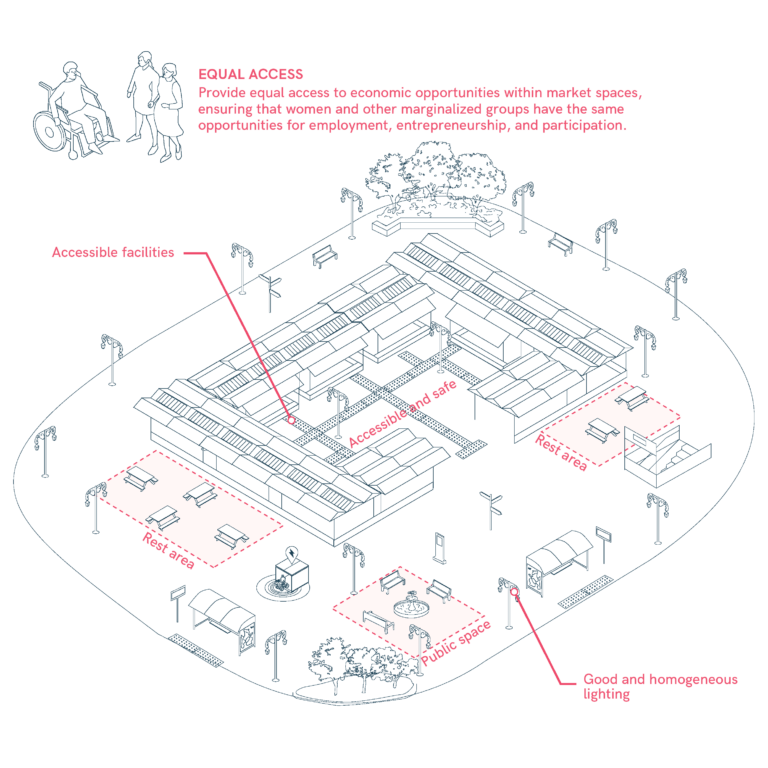
Integrate Markets a Gender Perspective
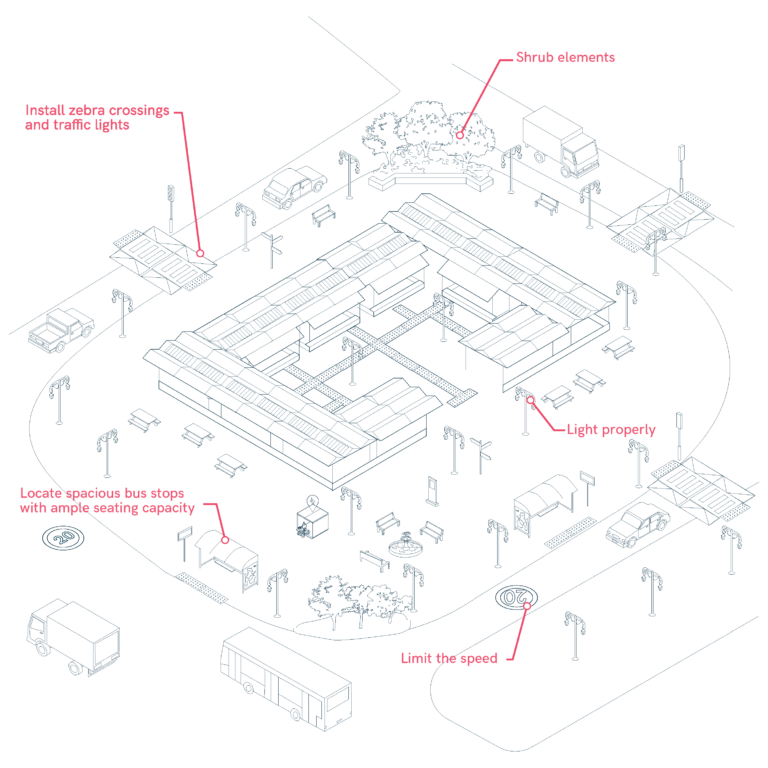
Intensify neighborhood circulation near markets

Interdisciplinary and Collaborative Urban Design
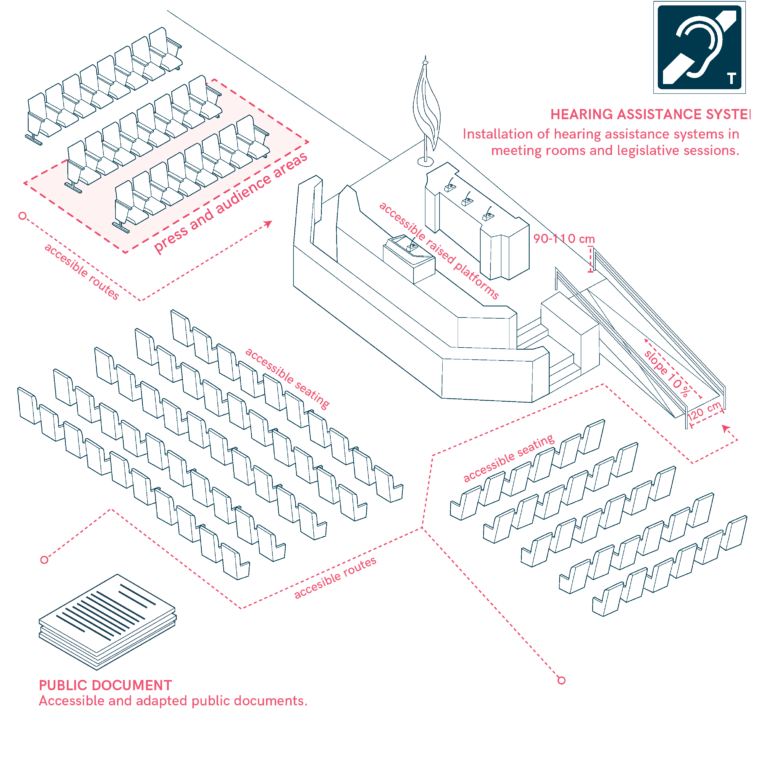
Legislative Buildings
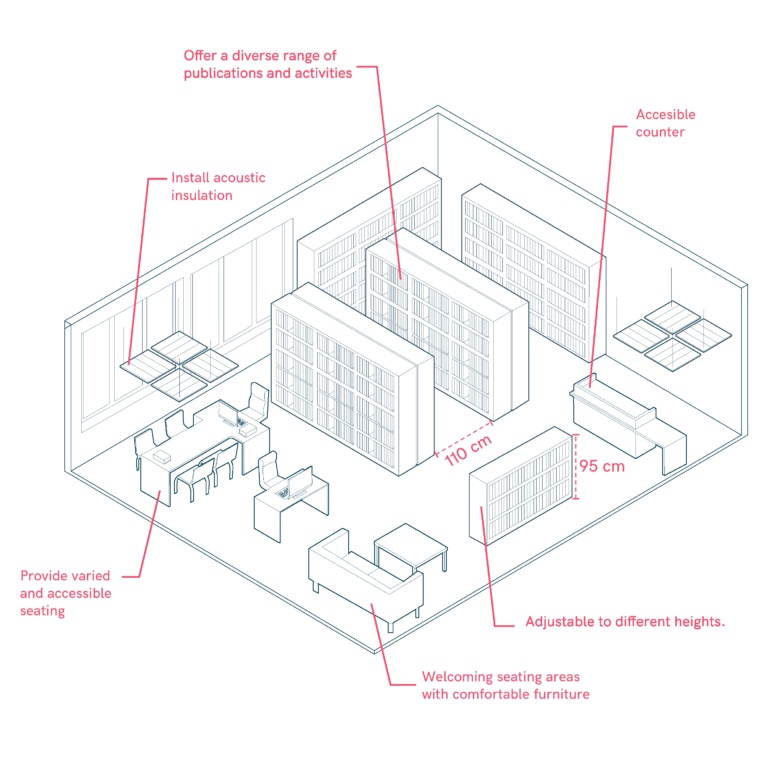
Libraries
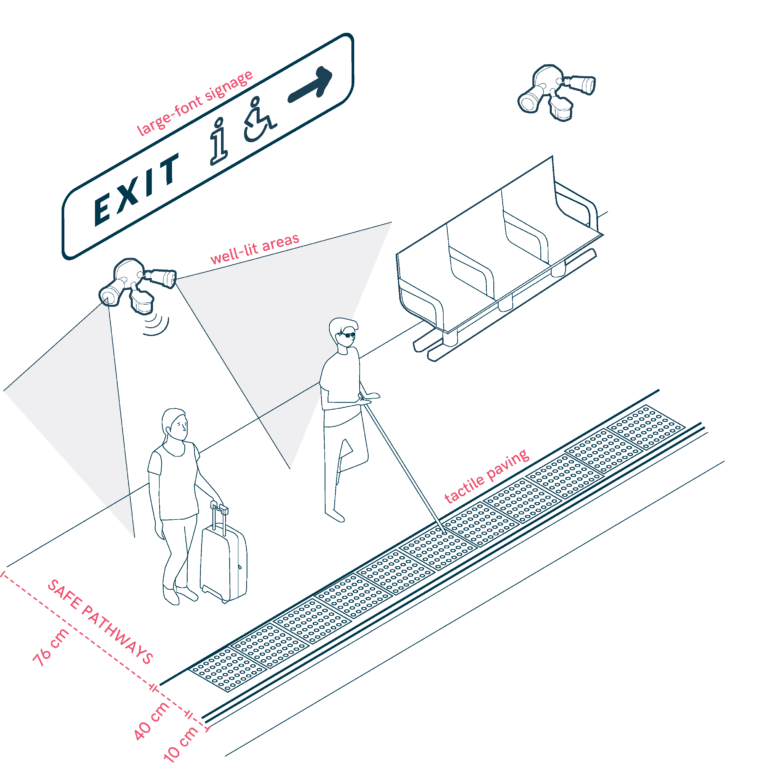
Lighting and Visibility Enhancements

Maintenance, Staff Training, and Additional Features
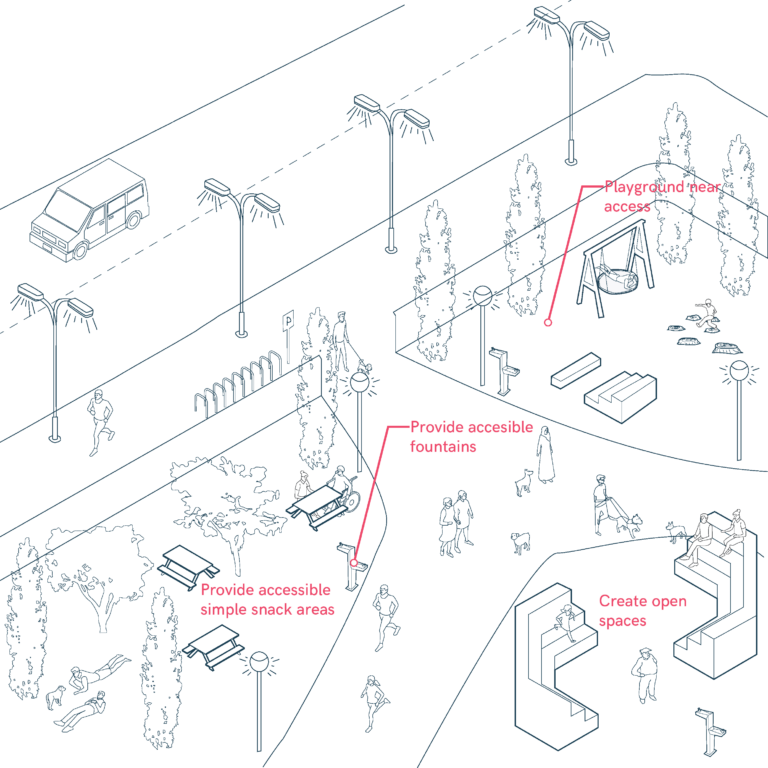
Meeting and Play Spaces

Mitigate Spontaneous Escapes
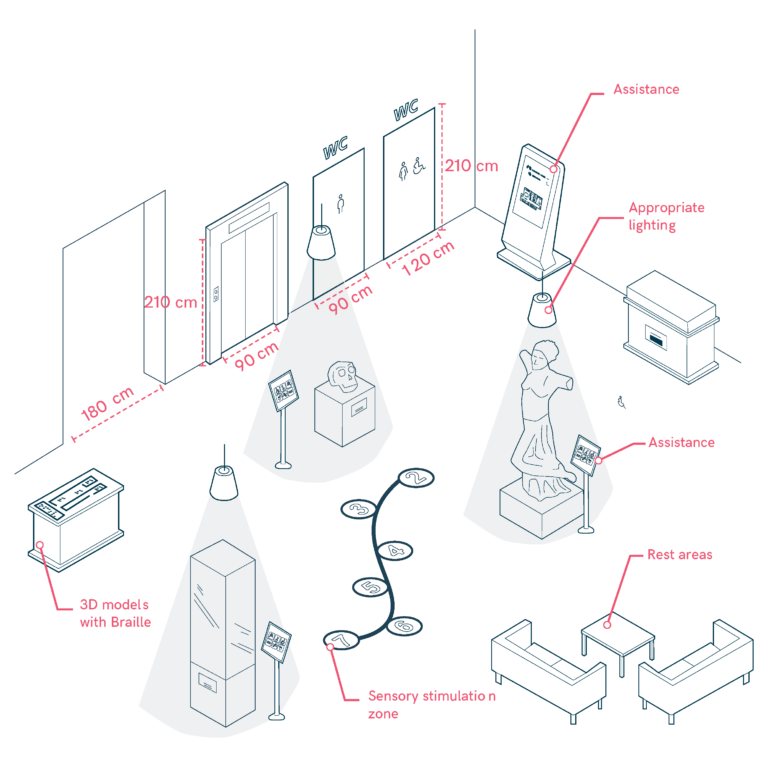
Museums and Heritage Sites
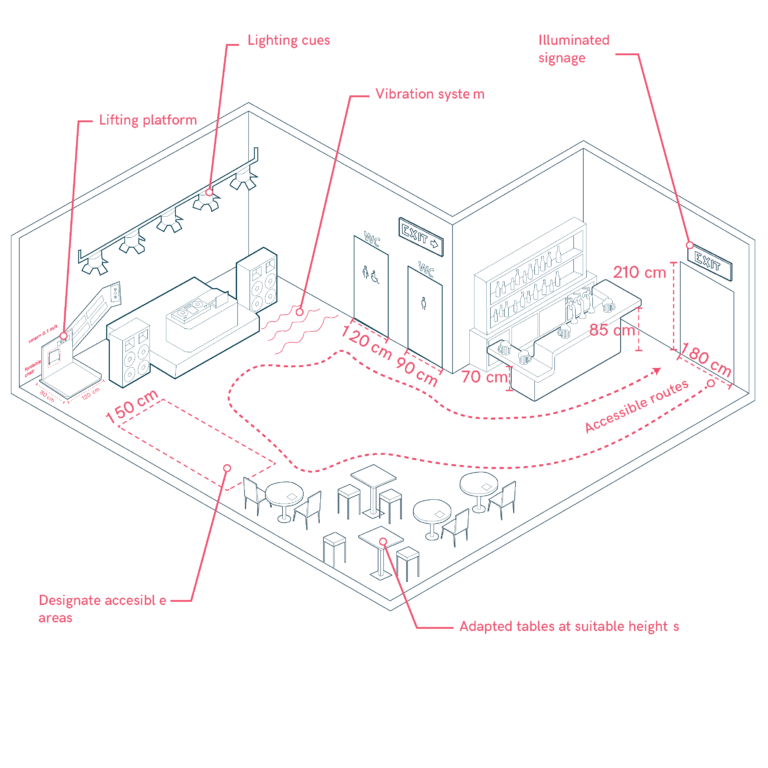
Nightclubs and Dance Venues

Outdoor Assistive Technologies
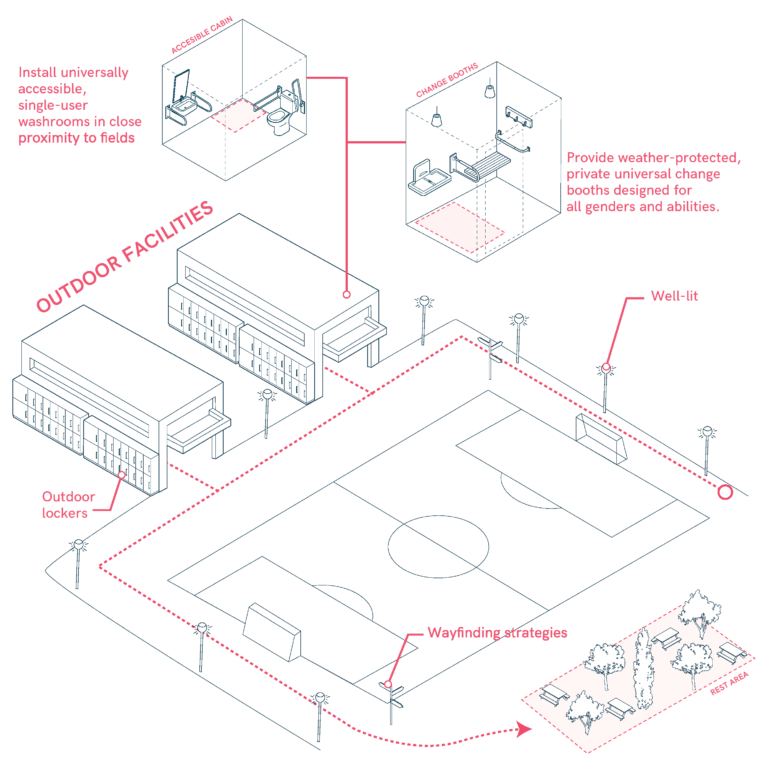
Outdoor Facilities with Inclusive Design

Parking Lot Design for Promoting Public Transport Use
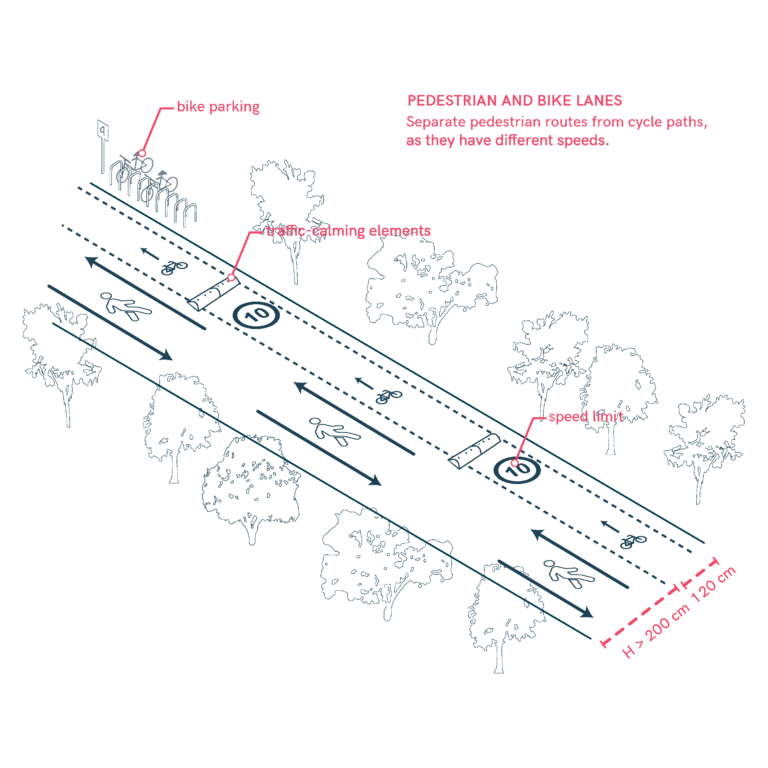
Pedestrian and Bicycle Paths
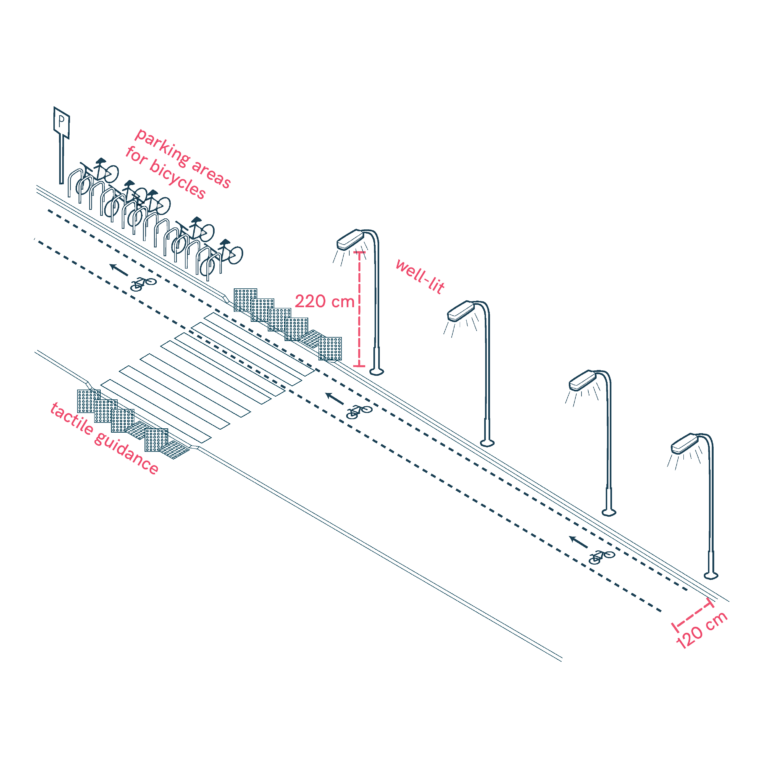
Pedestrian and Mobility-Friendly Spaces
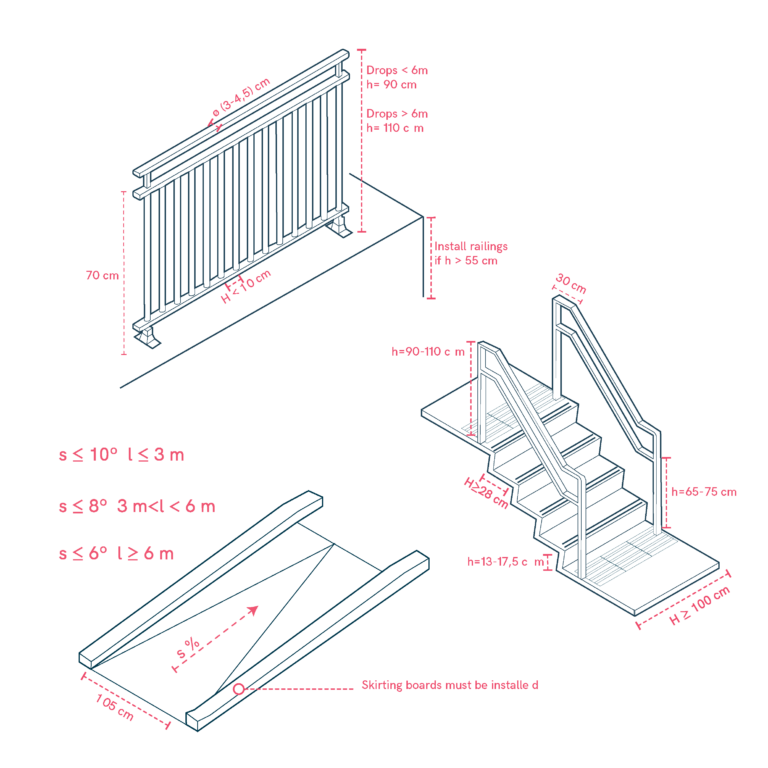
Pedestrian Protection Elements in Public Spaces
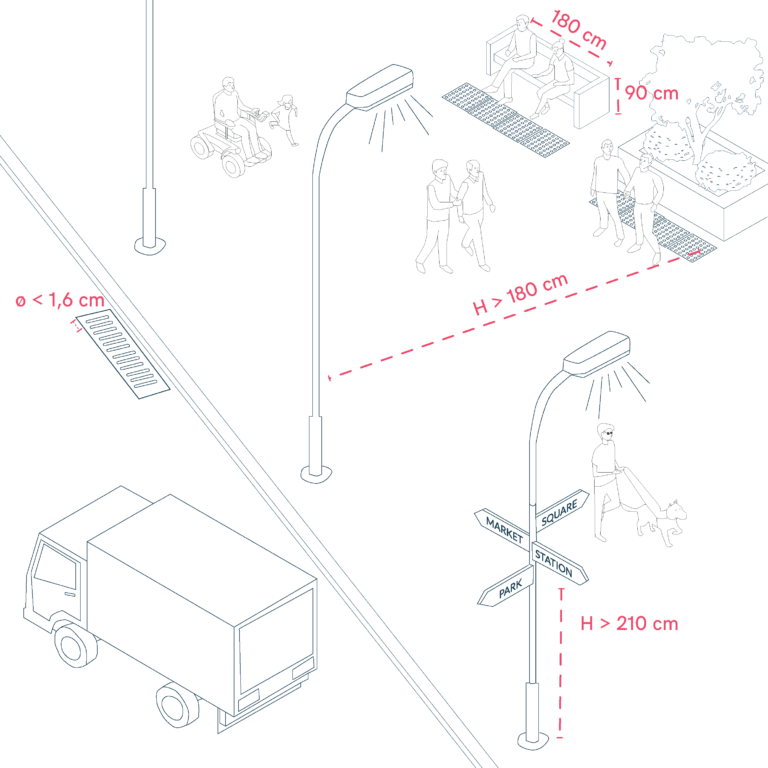
Pedestrian Routes
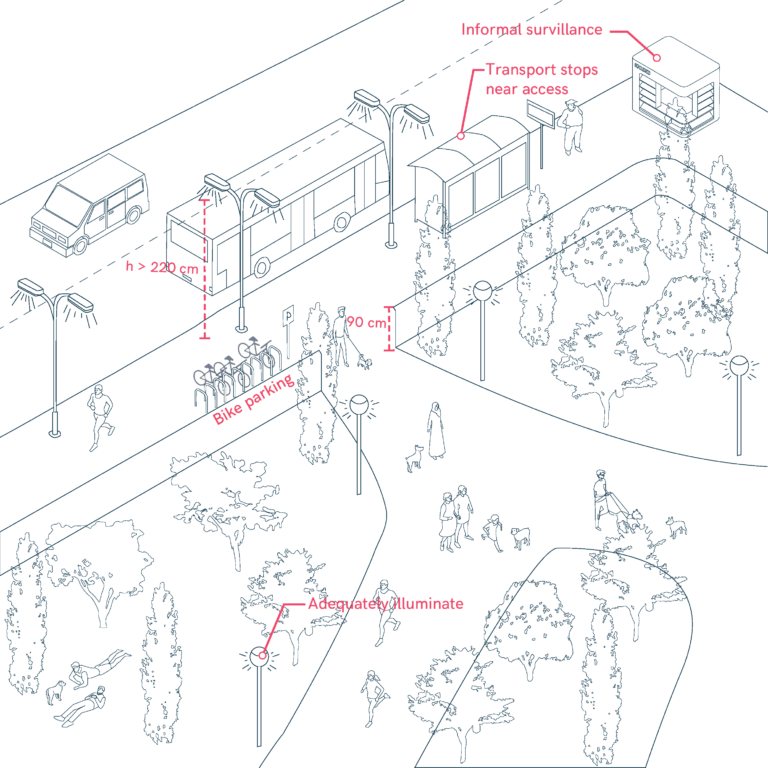
Permeability and Accessibility from Surrounding Areas
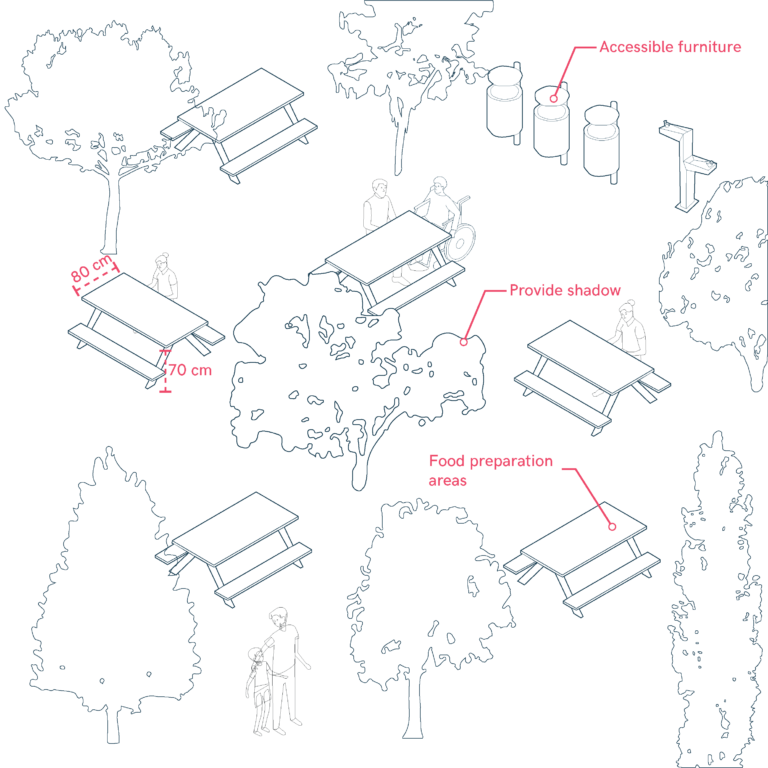
Picnic and Rest Areas
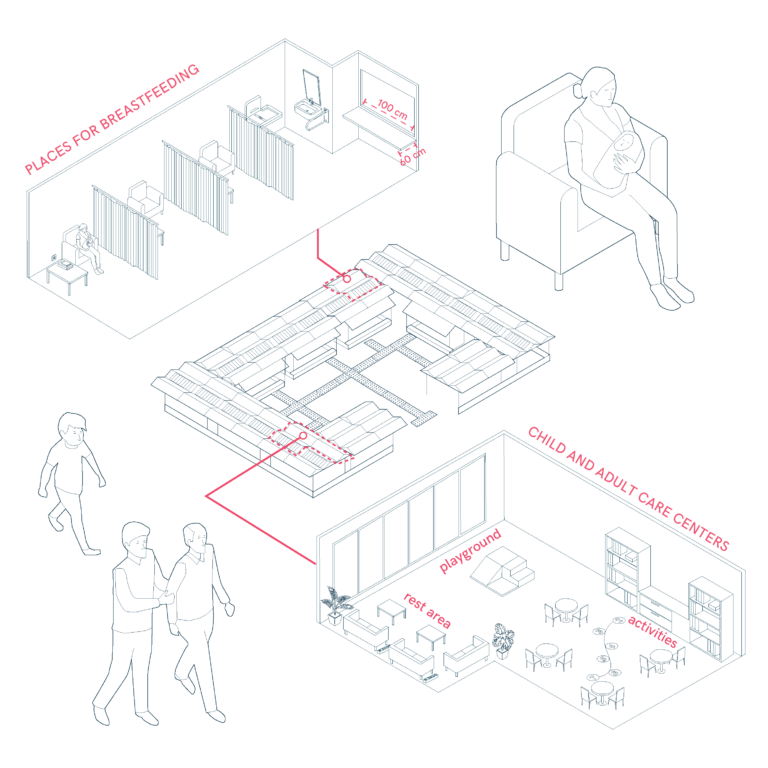
Places for people caring for users
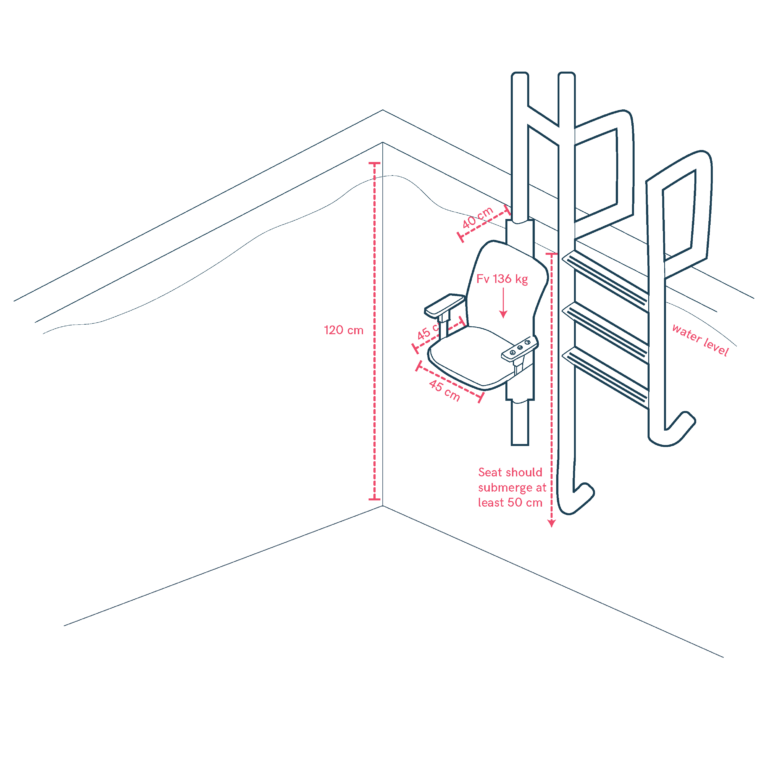
Pool Lifts
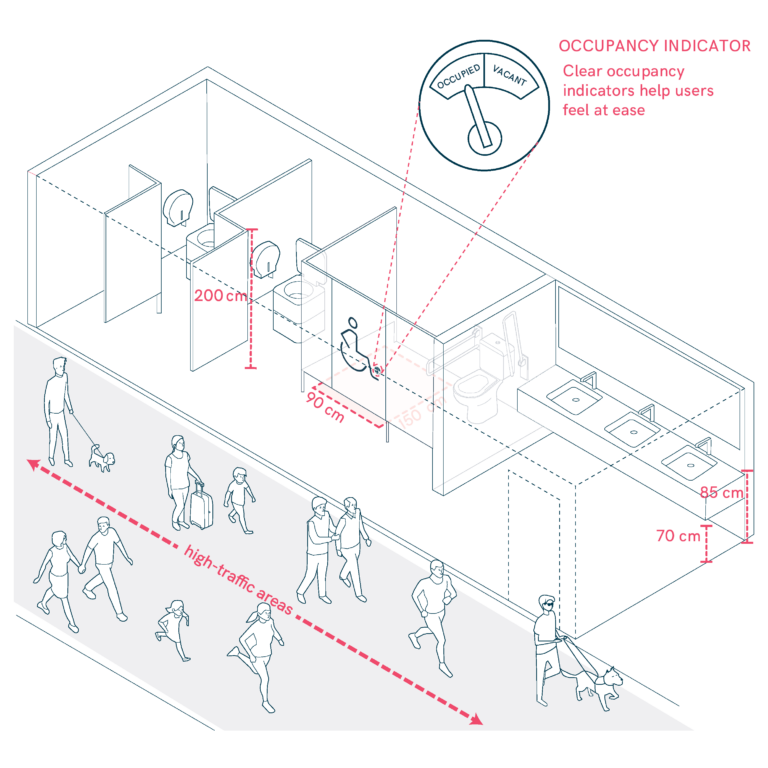
Privacy and Safety in Shared Spaces
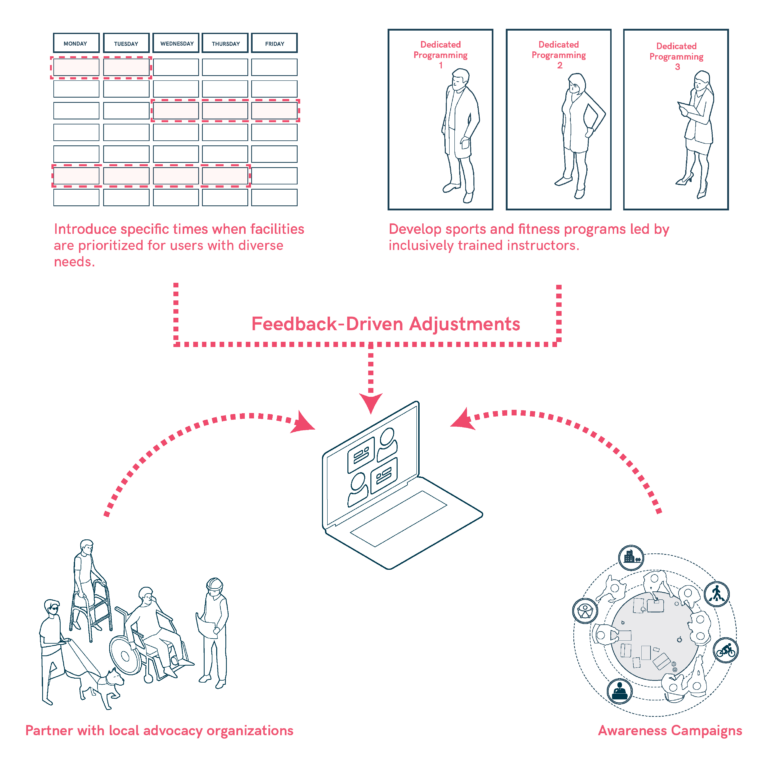
Programming and Pilot Initiatives
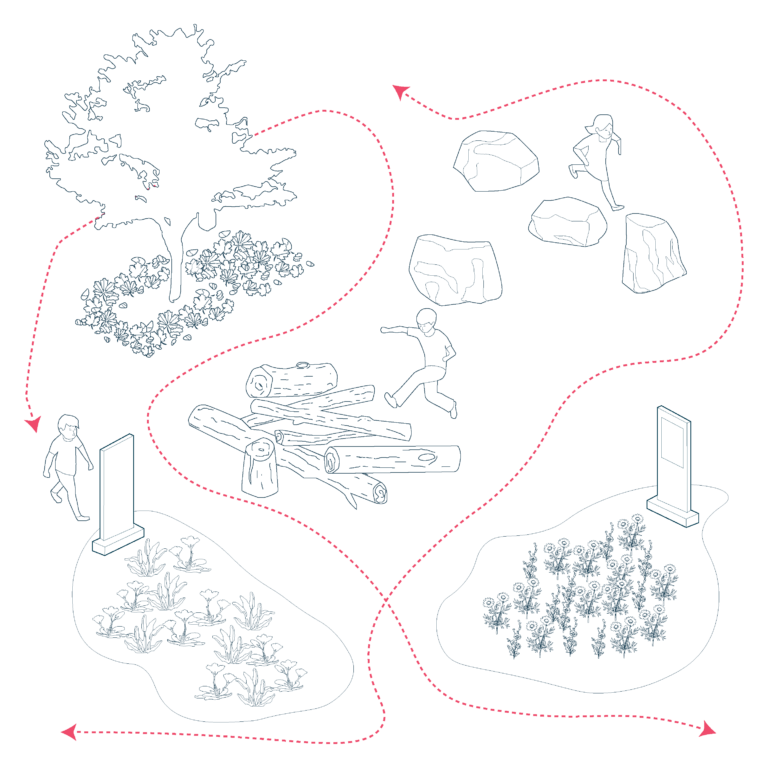
Promote Biophilic and Sustainable Design
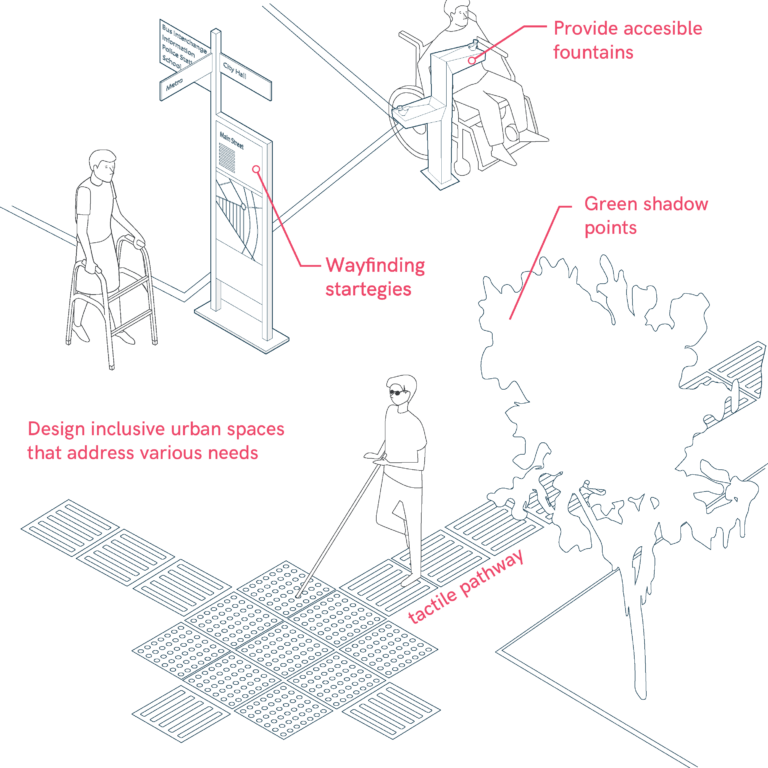
Promote Diversity, Autonomy, and Proximity
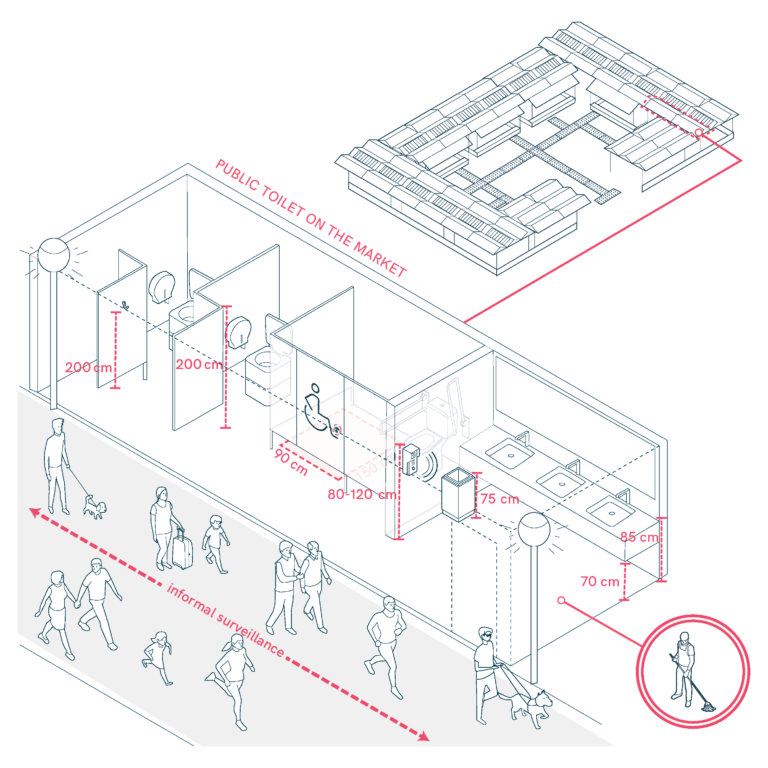
Put public toilets on the market
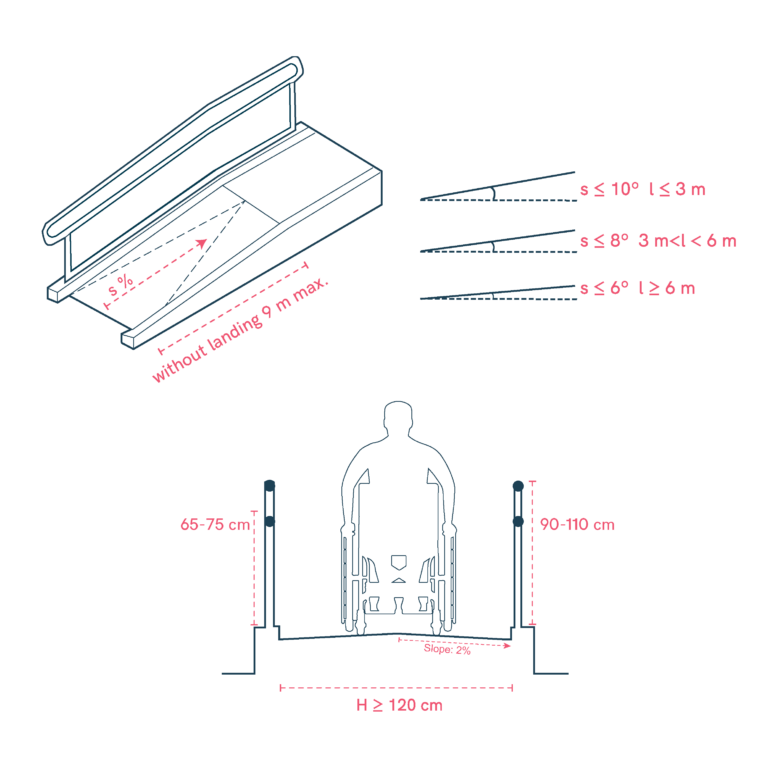
Ramp Design and Specifications
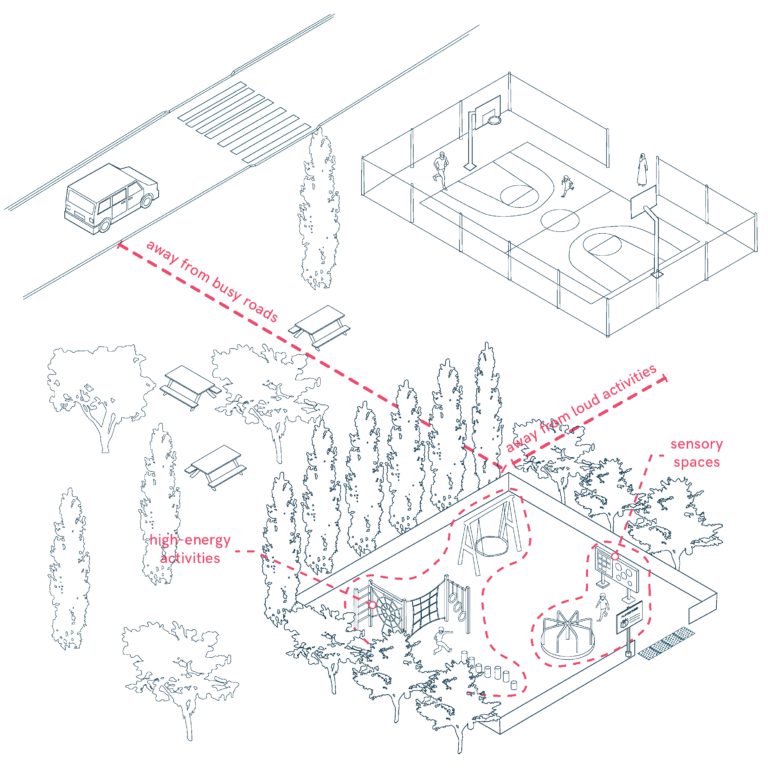
Reduce Stimuli in Overwhelming Environments
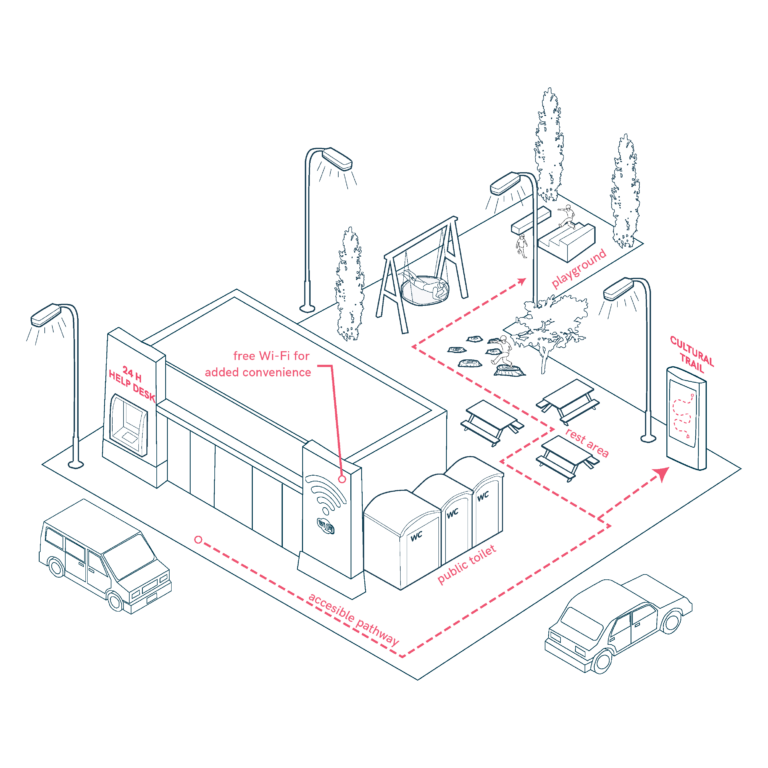
Rest and Service Areas
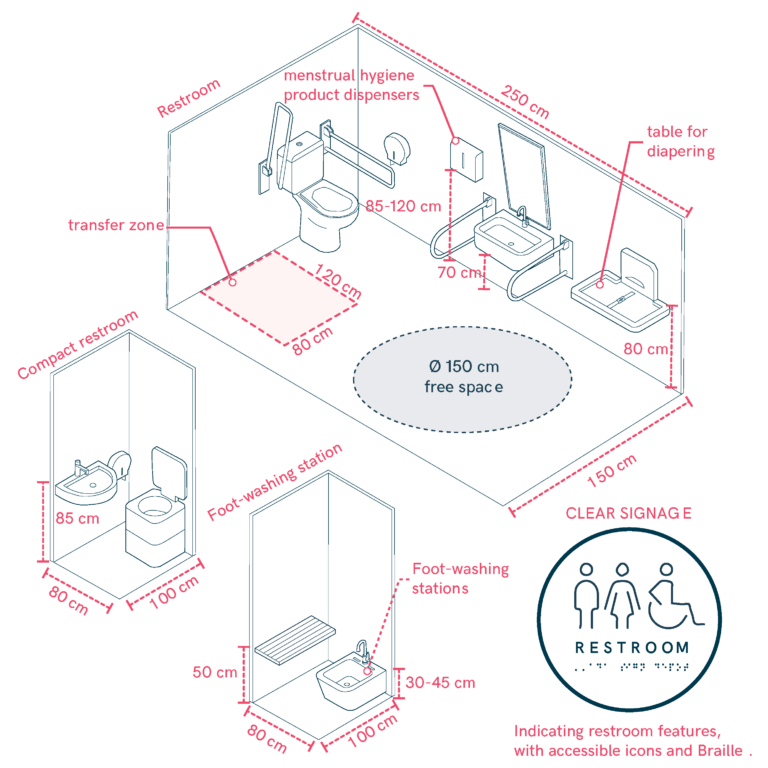
Restroom Design Based on Specific Needs

Restrooms in Mobility Hubs
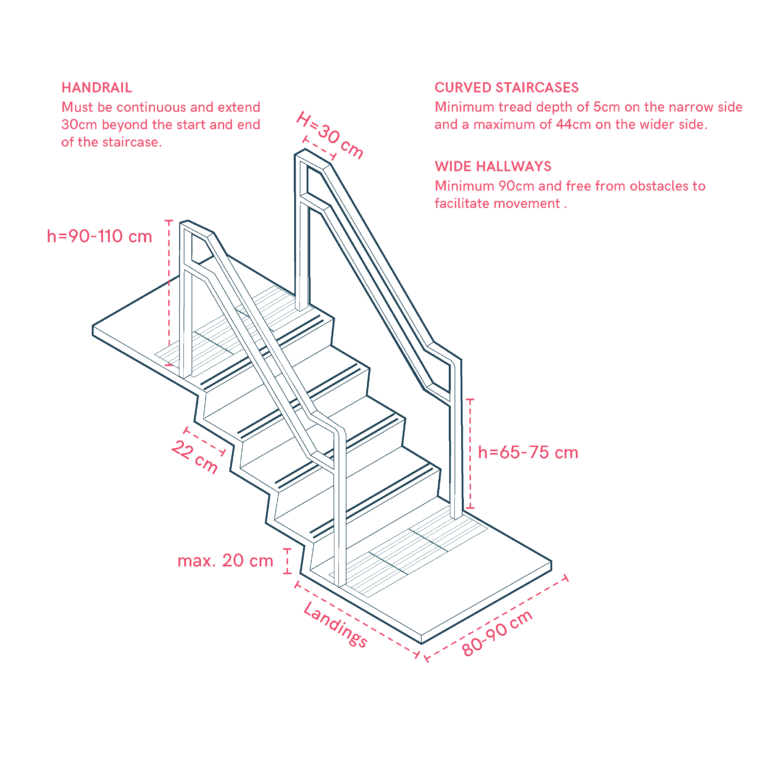
Safe and Accessible Stairs and Hallways
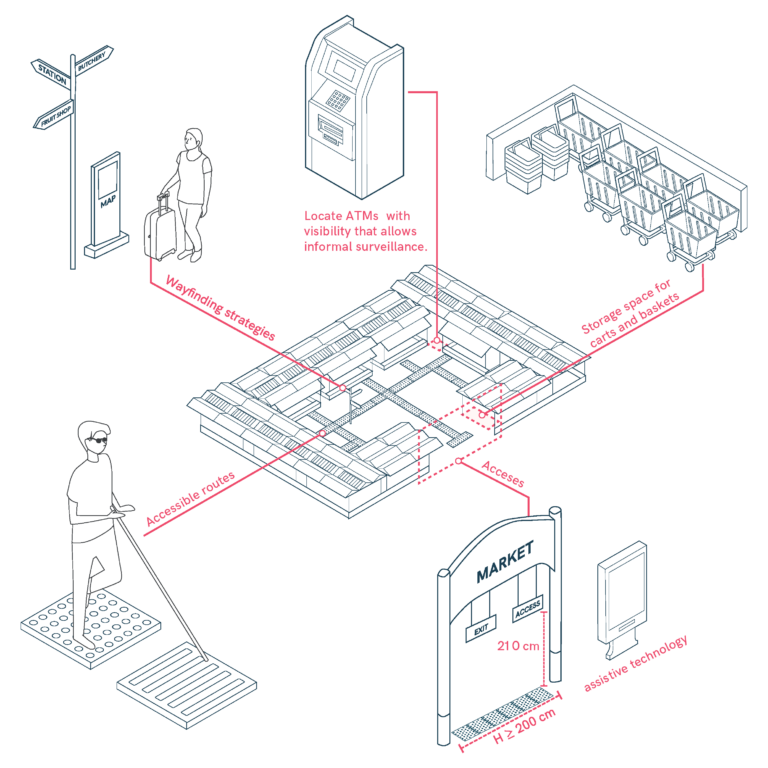
Safe and Easy Circulation
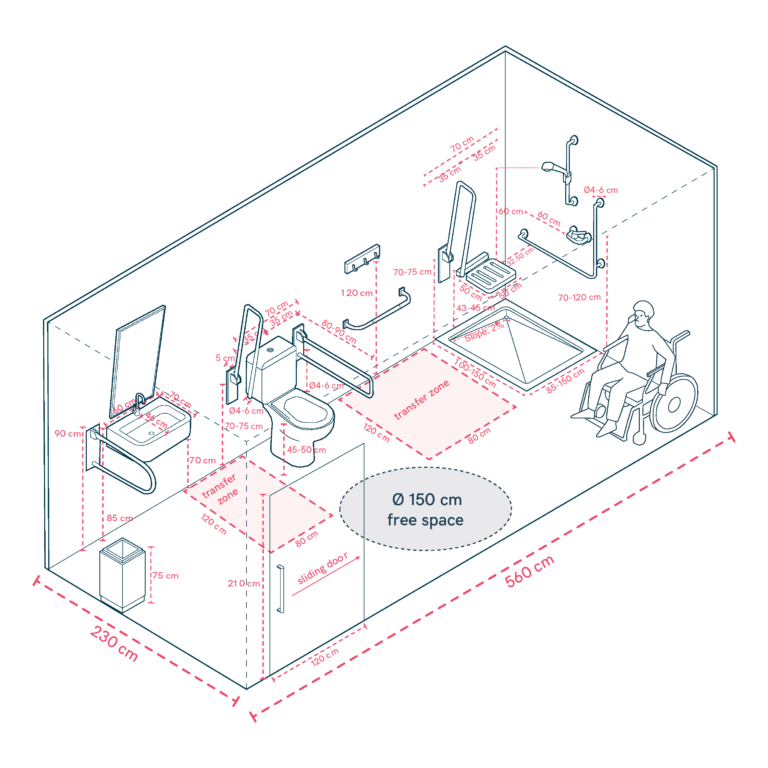
Safe and Functional Bathrooms
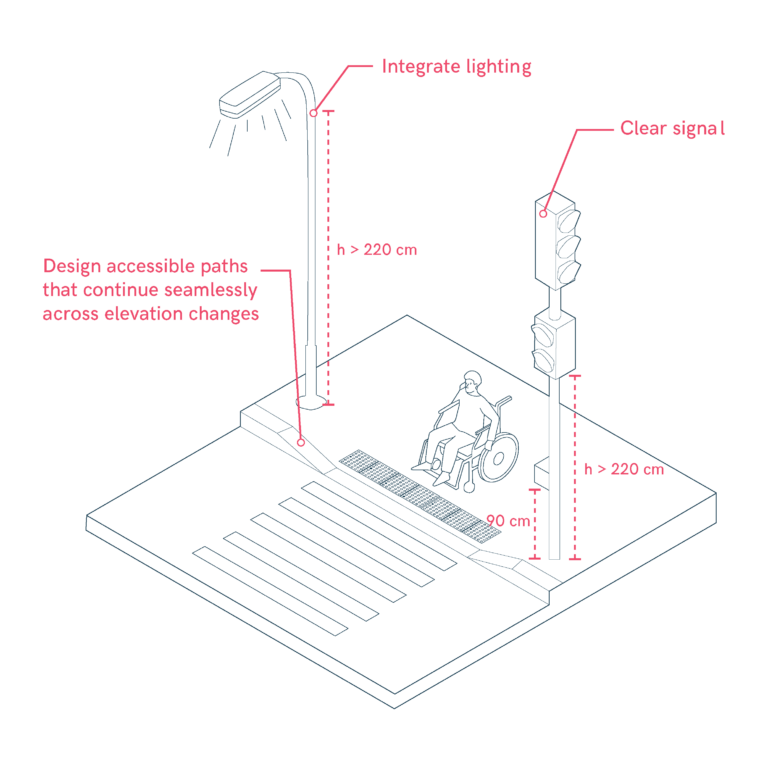
Seamless Continuity
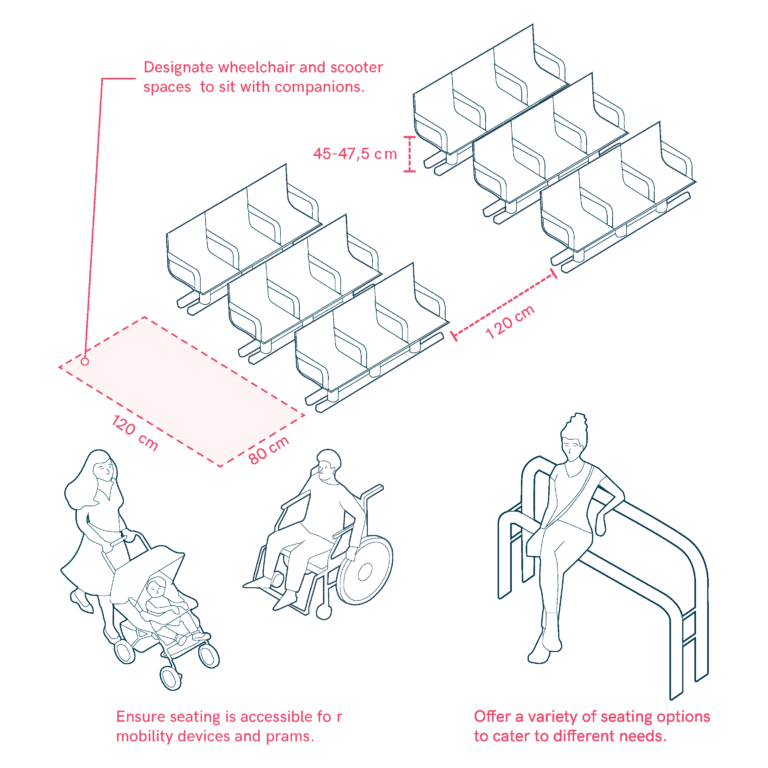
Seating Areas
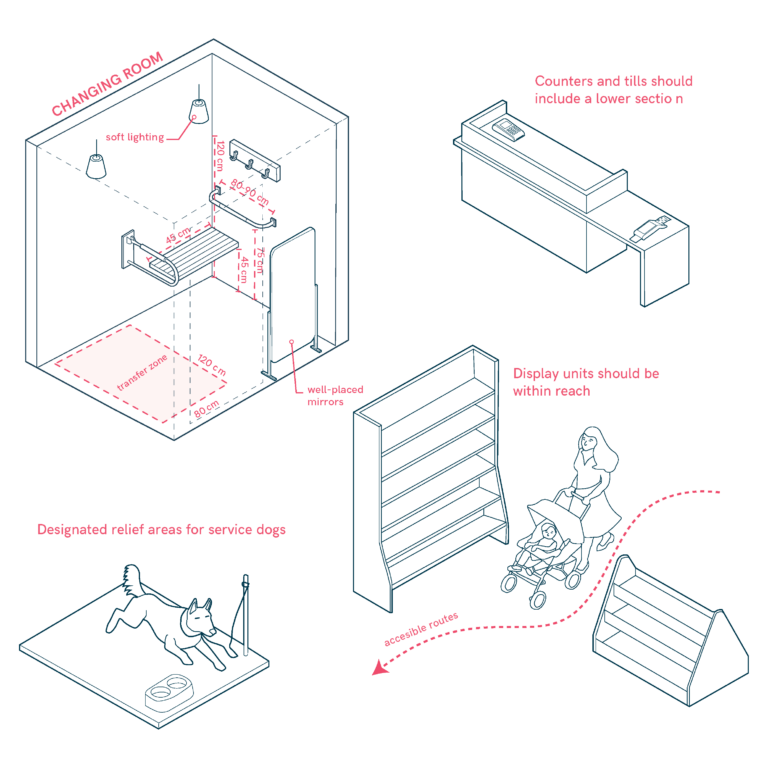
Shops and Retail Spaces
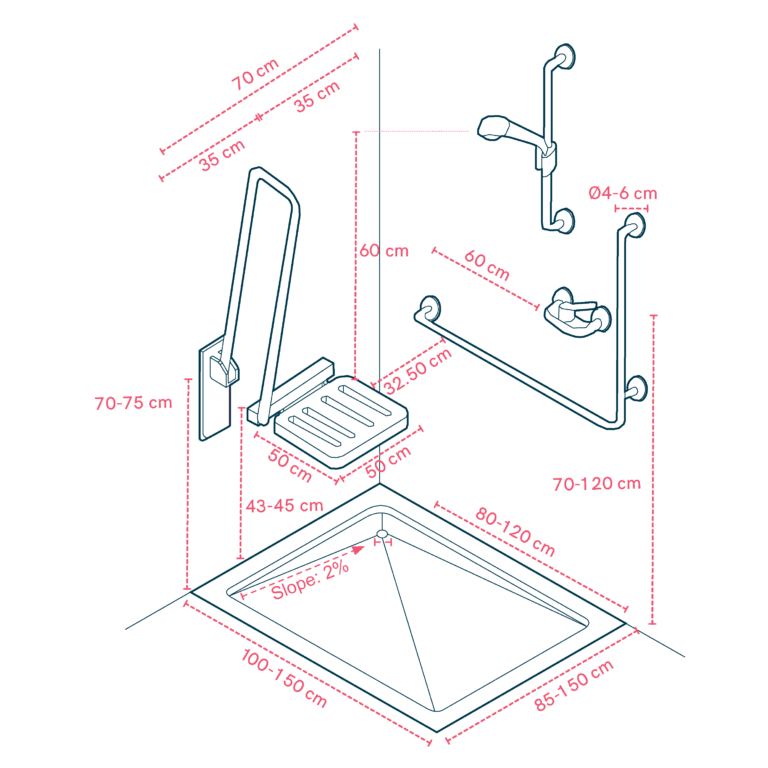
Showers Designed for Accessibility and Comfort
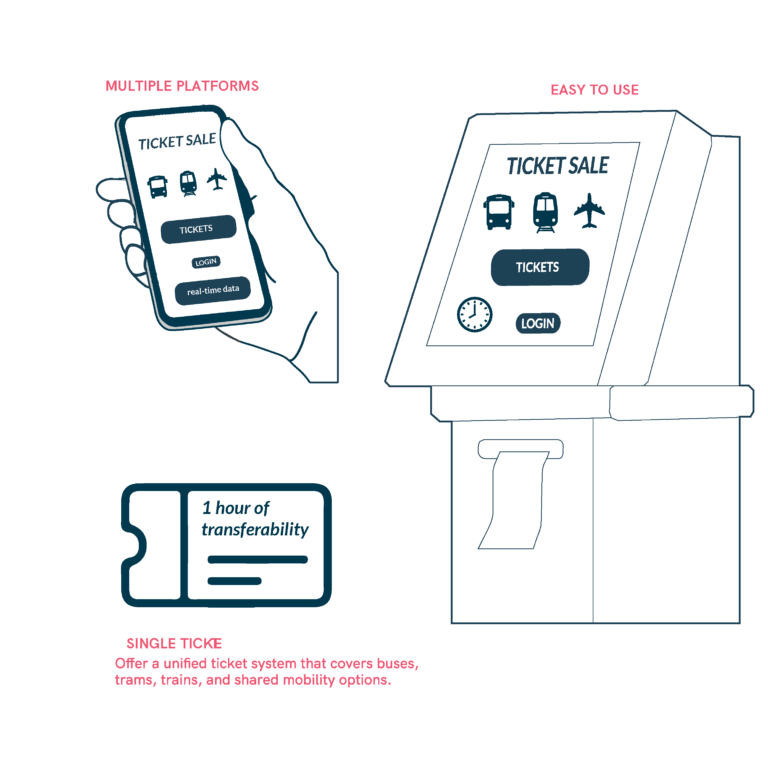
Single Ticket for Multimodal Public Transport
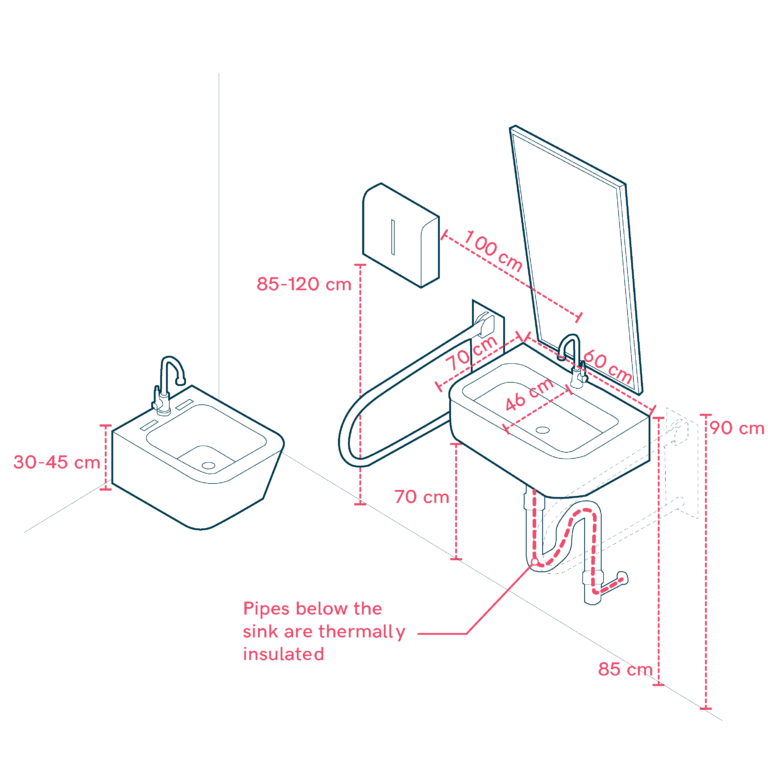
Sinks for Different User Needs

Social and Community Housing
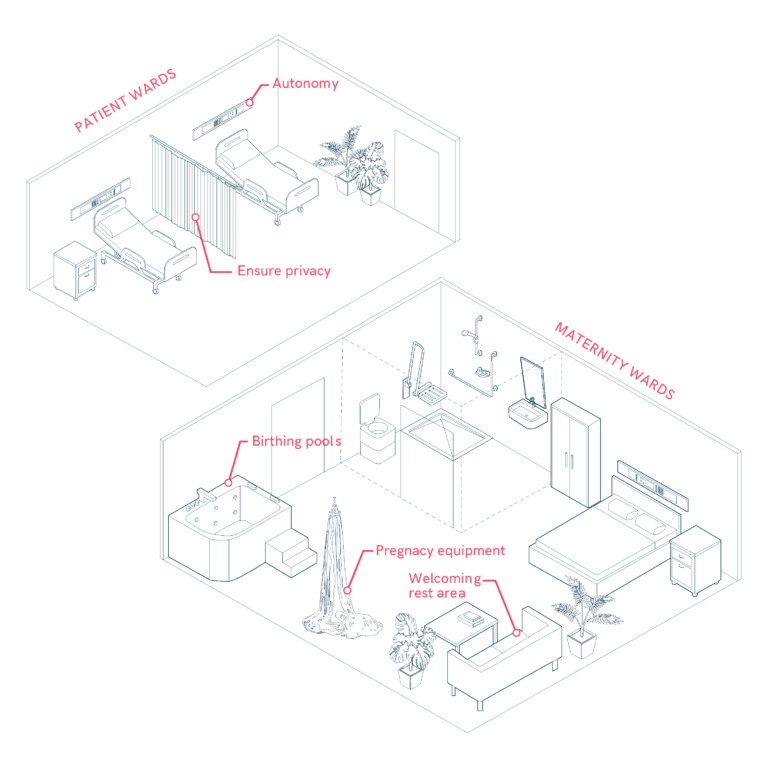
Specialist Areas and Medical Equipment
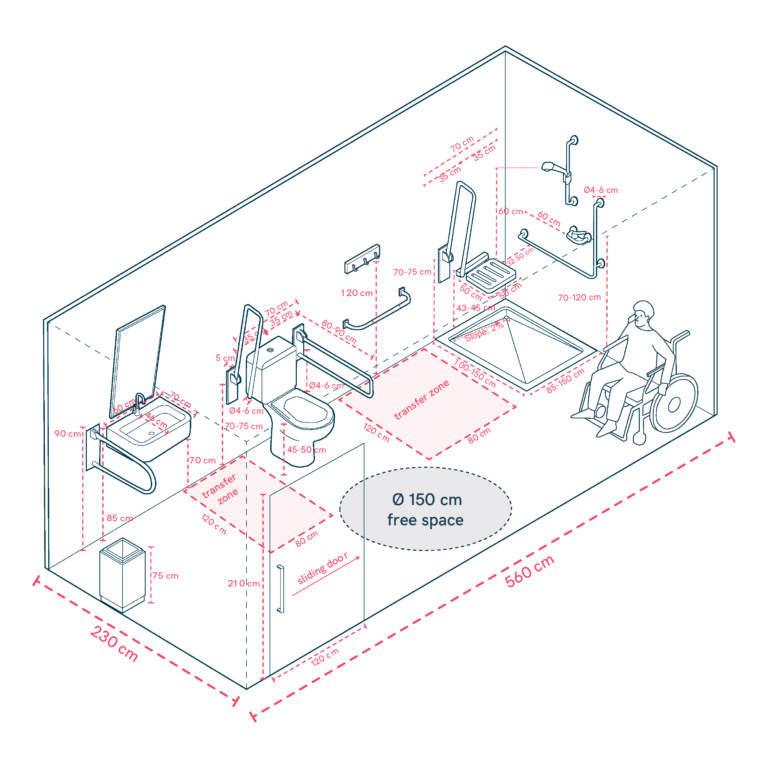
Specific toilets
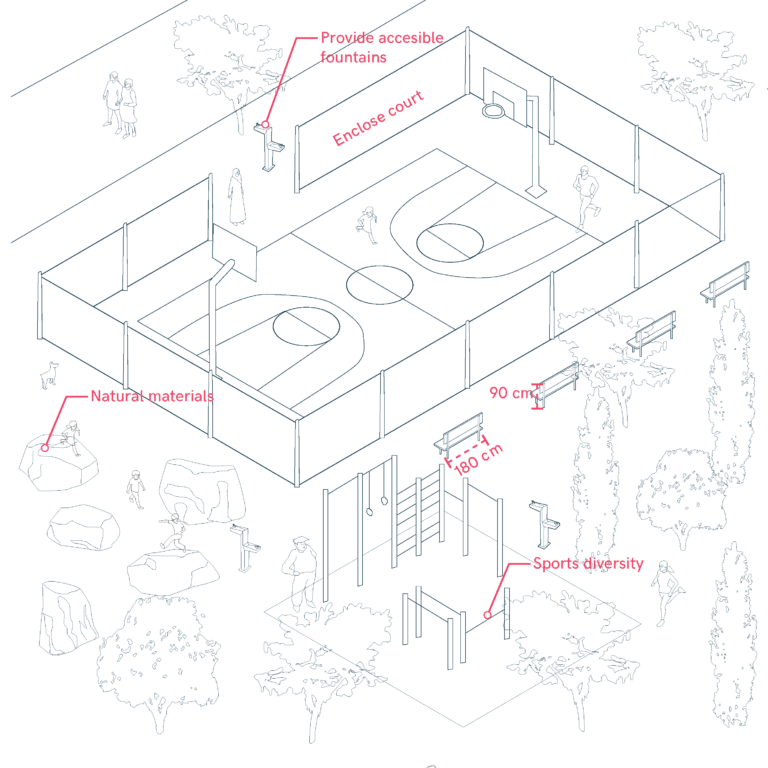
Sporting and Recreational Facilities
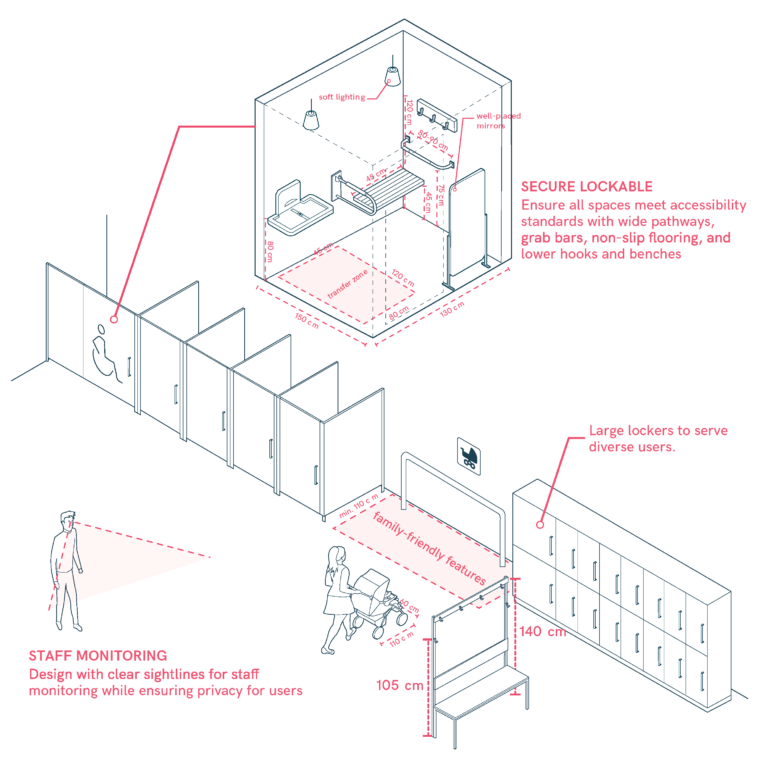
Sports Centre Changing Rooms
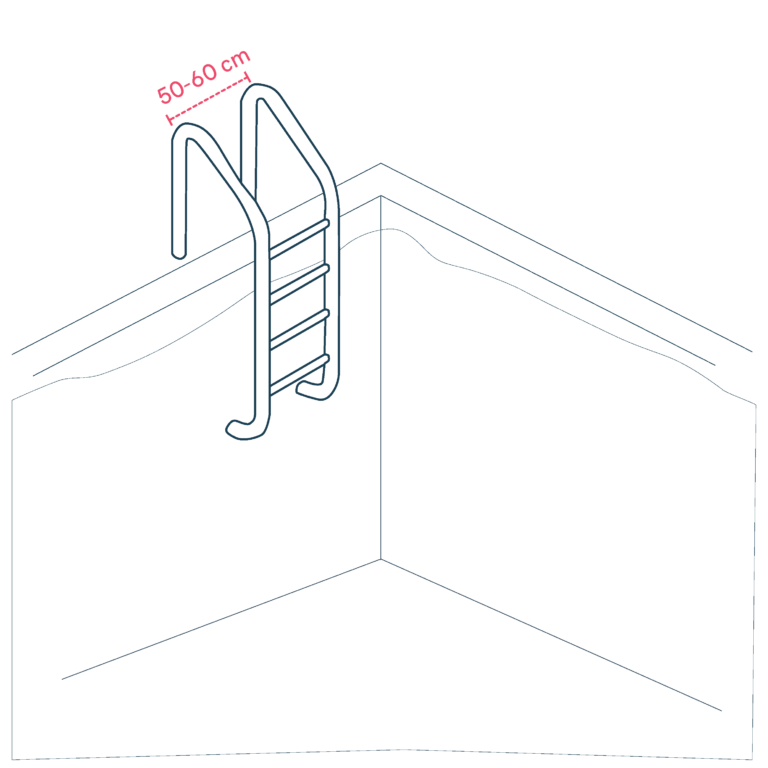
Swimming Pool Ladders
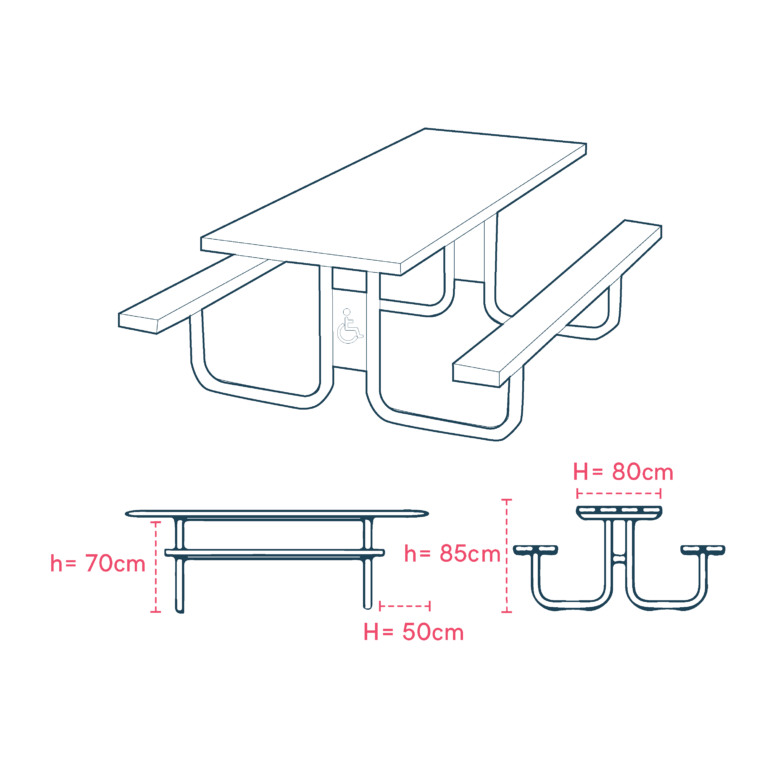
Tables and Picnic Areas
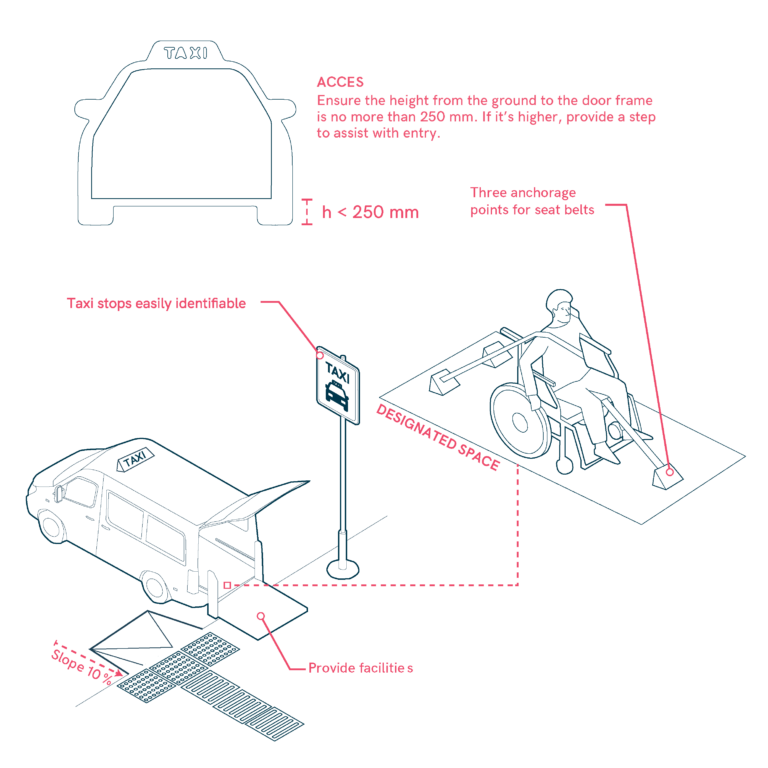
Taxi Accessibility
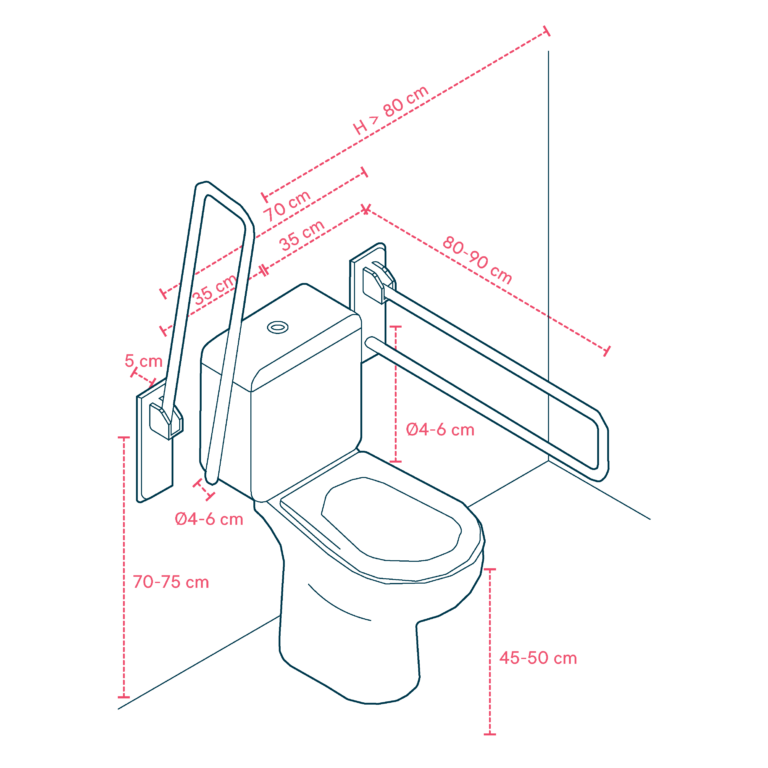
Toilets for Functional Accessibility
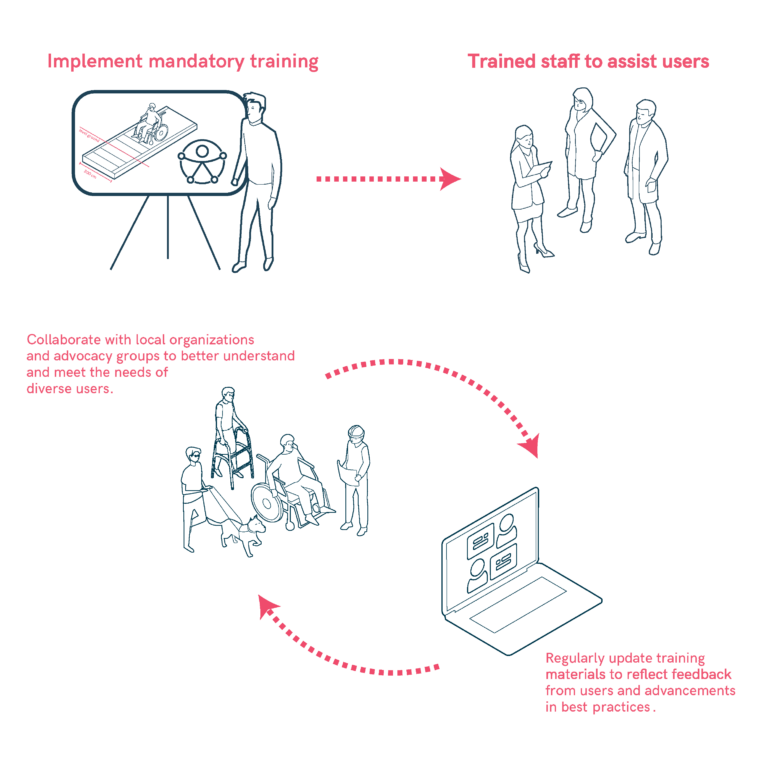
Training and Education
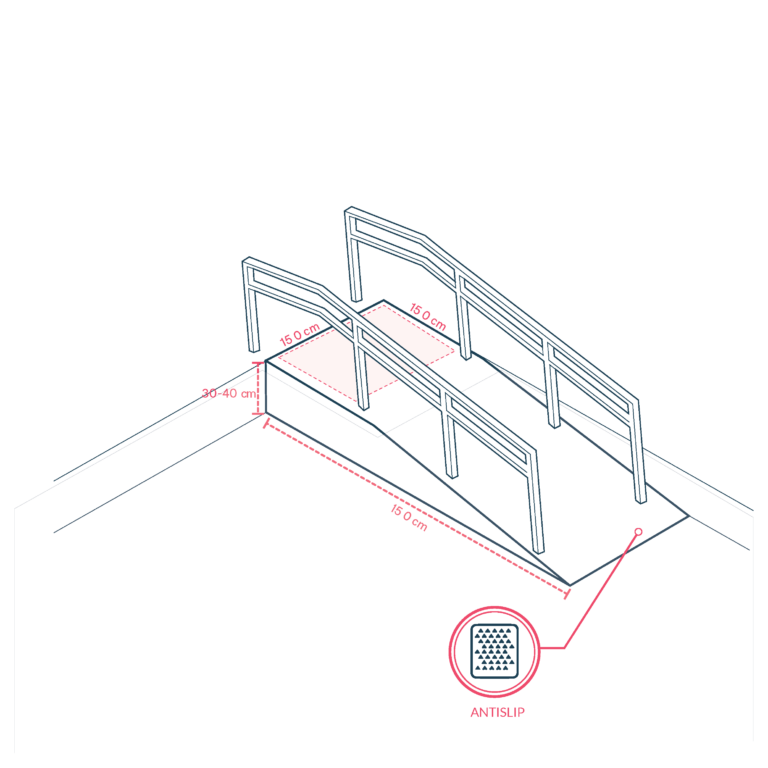
Transfer Walls
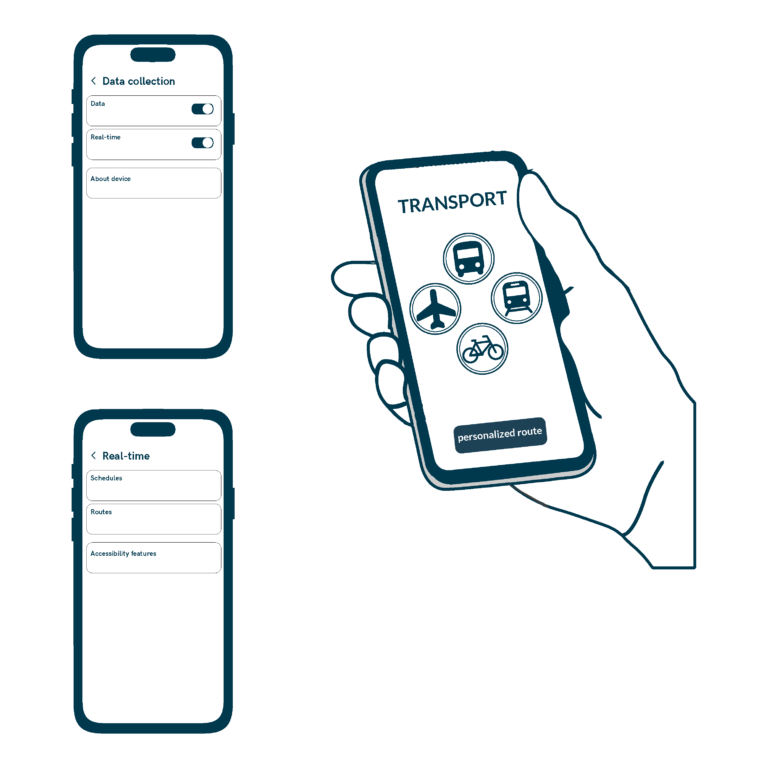
Transport Data Collection
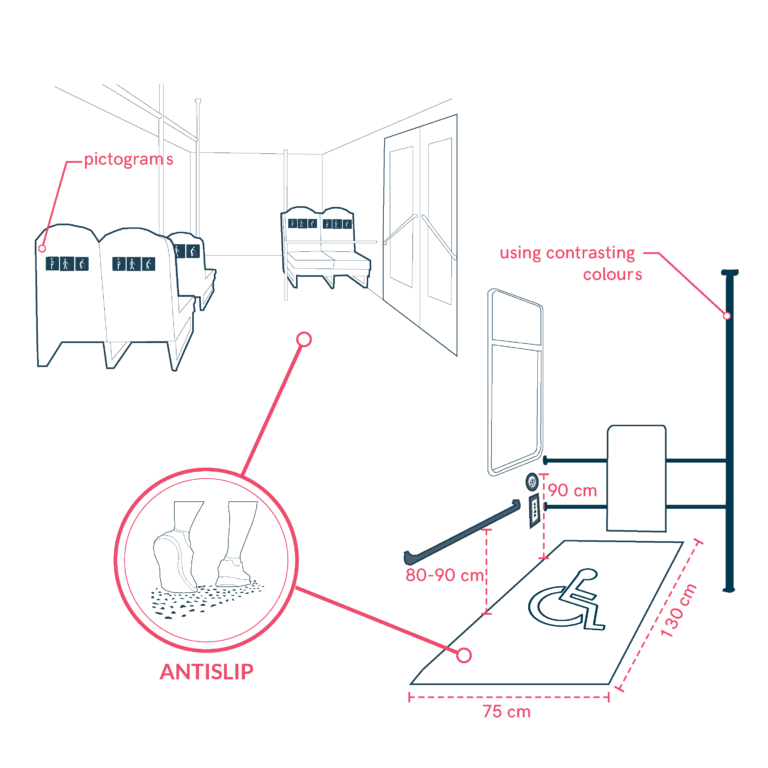
Travelling by Bus

Urban Furniture and Amenities
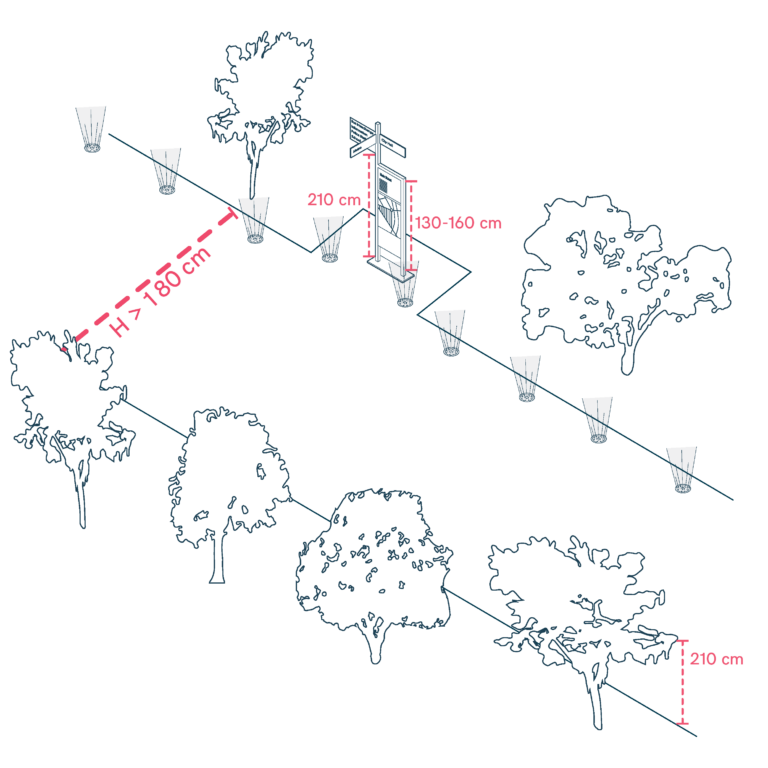
Vegetation and Landscape Design
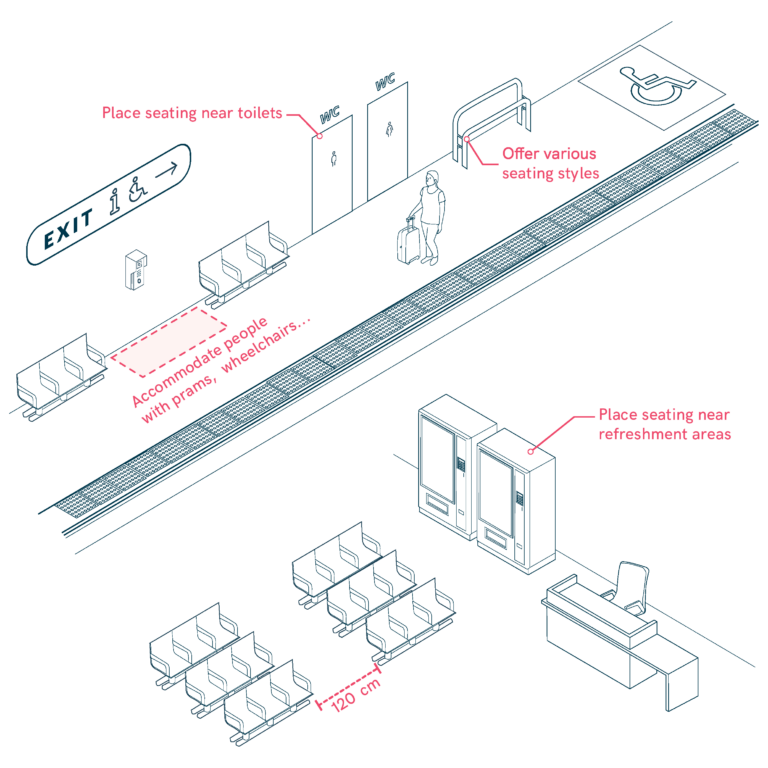
Waiting Areas
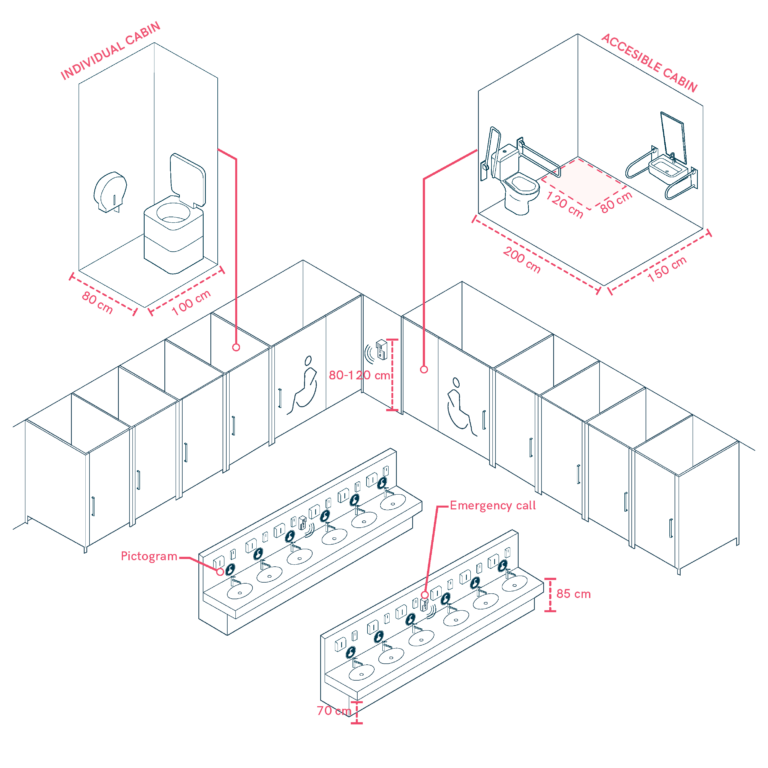
Washrooms for Sports Centers
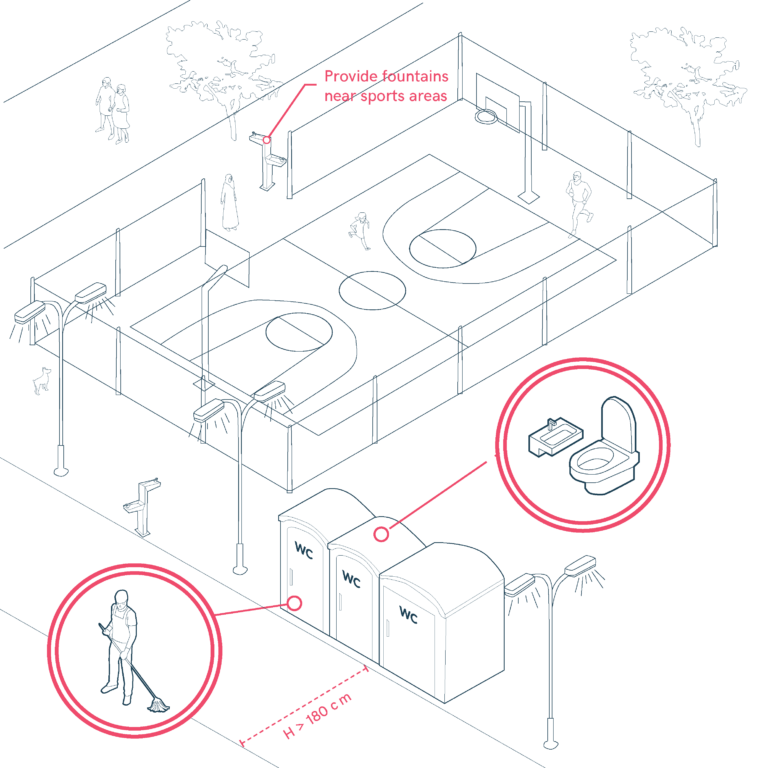
Water and Hygiene Facilities
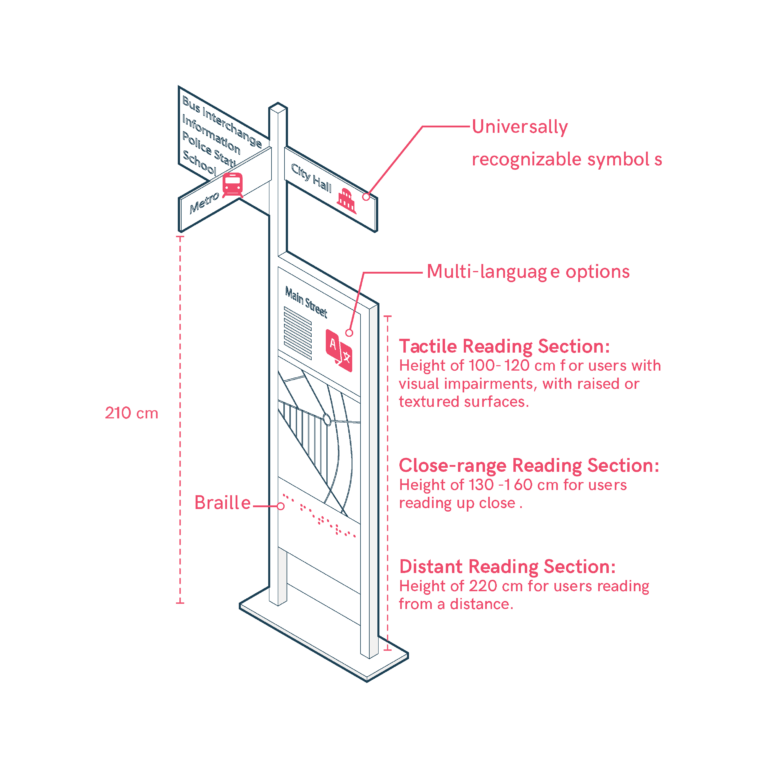
Wayfinding Strategies
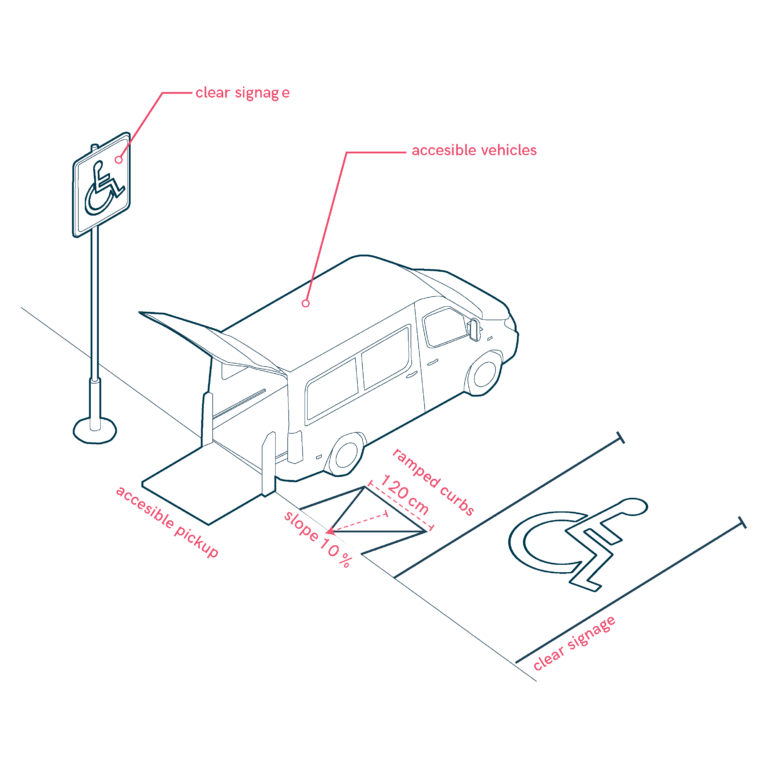
Wheelchair Accessible Taxis and Ride-Hailing at Mobility Hubs
